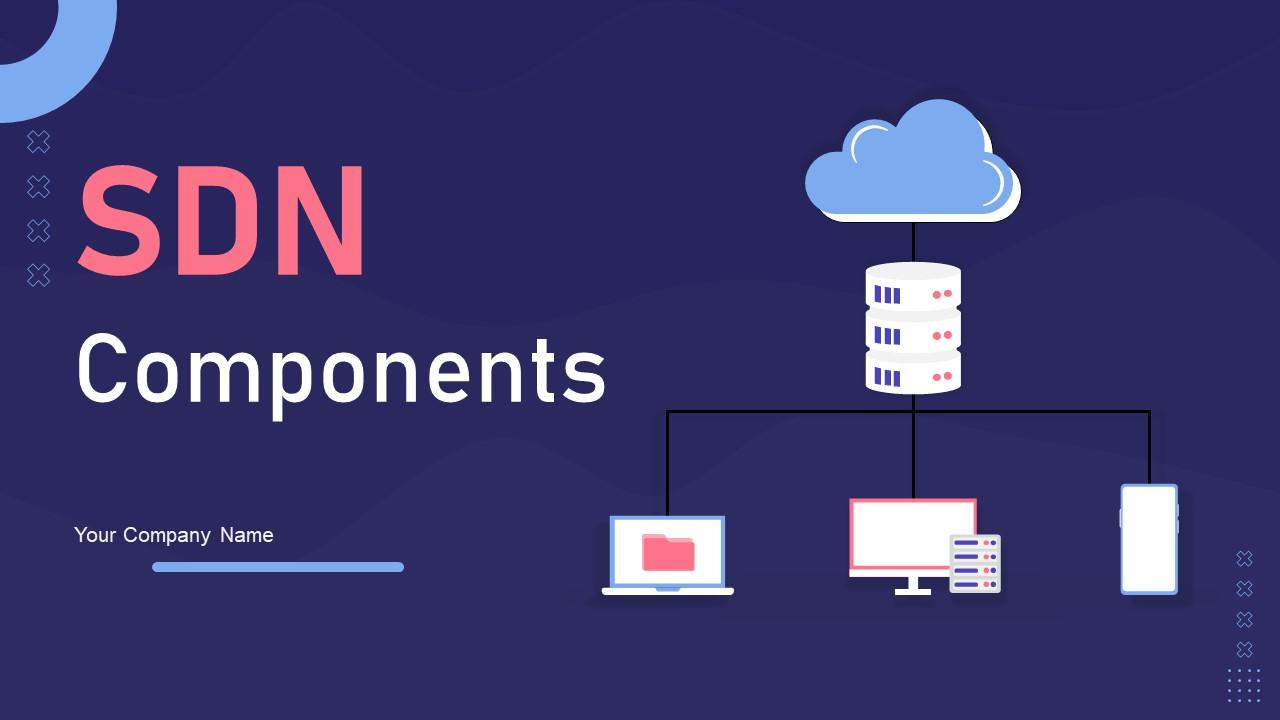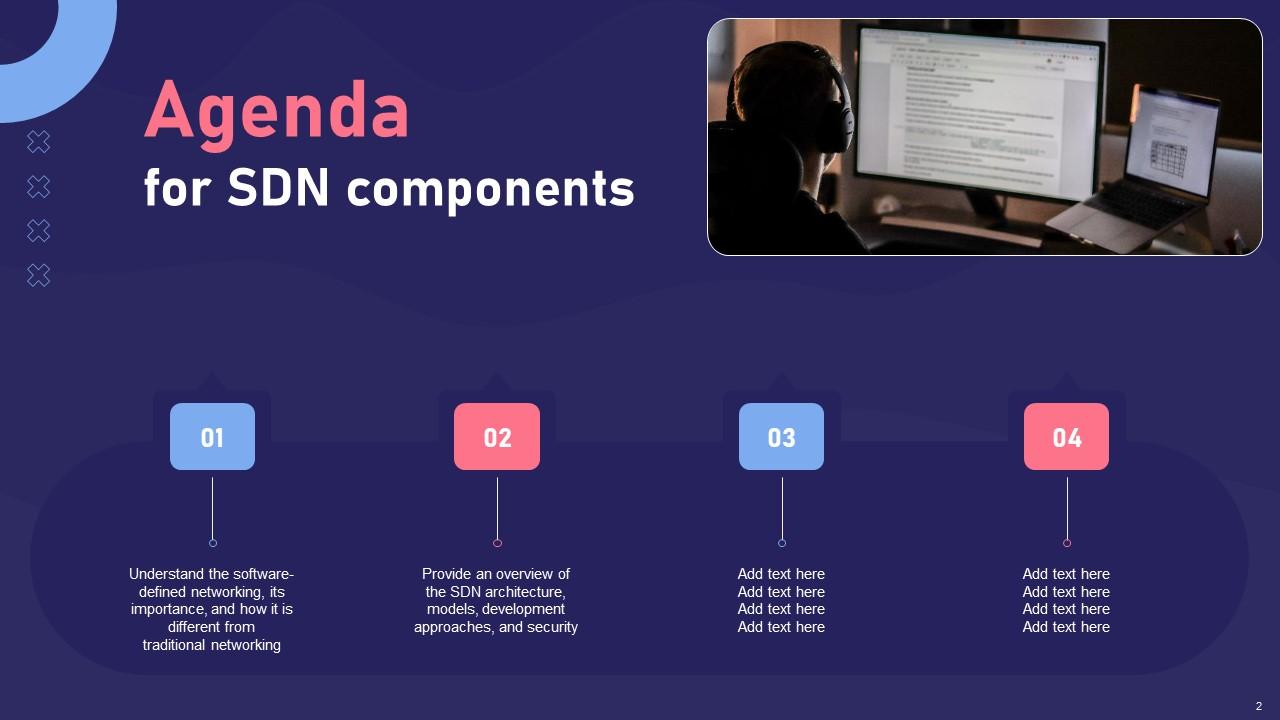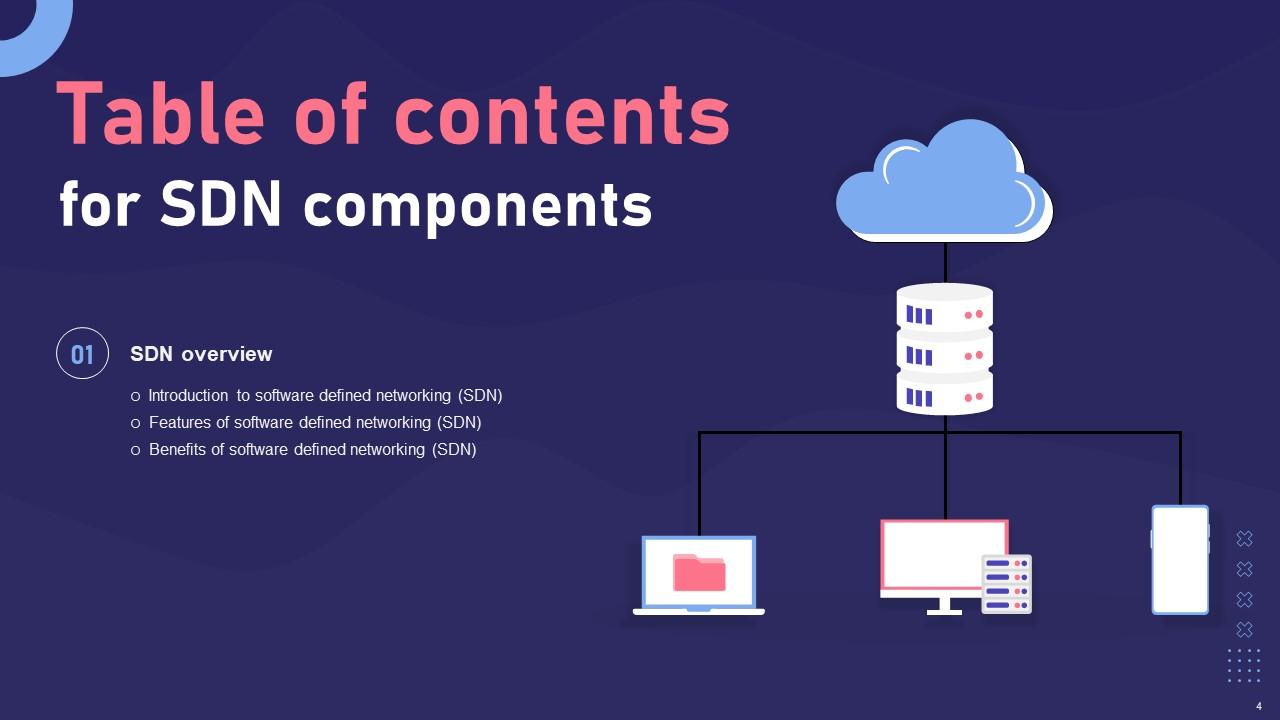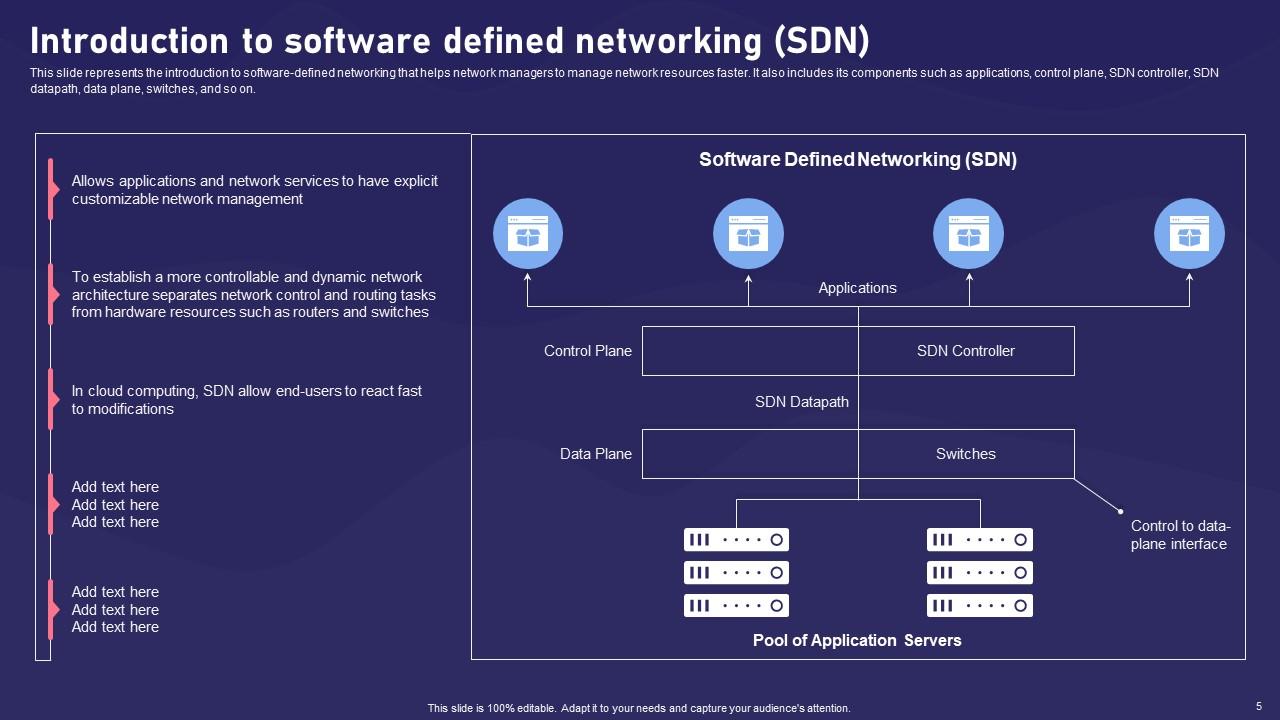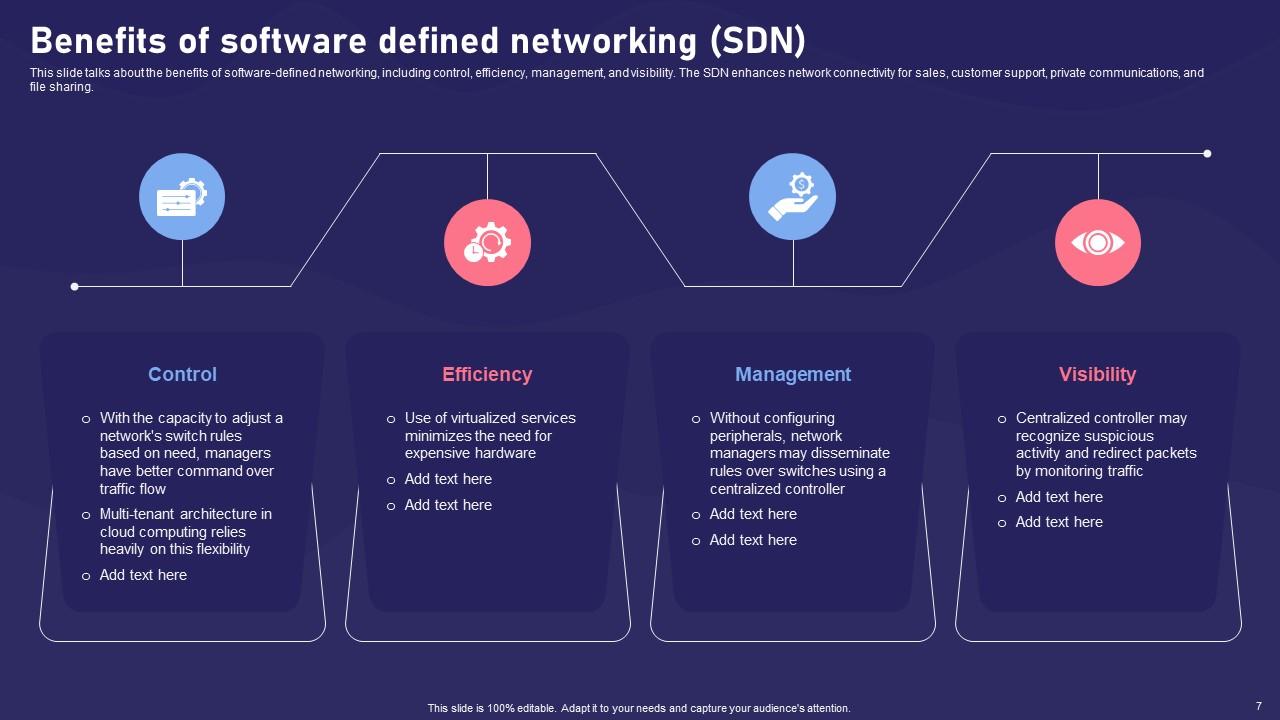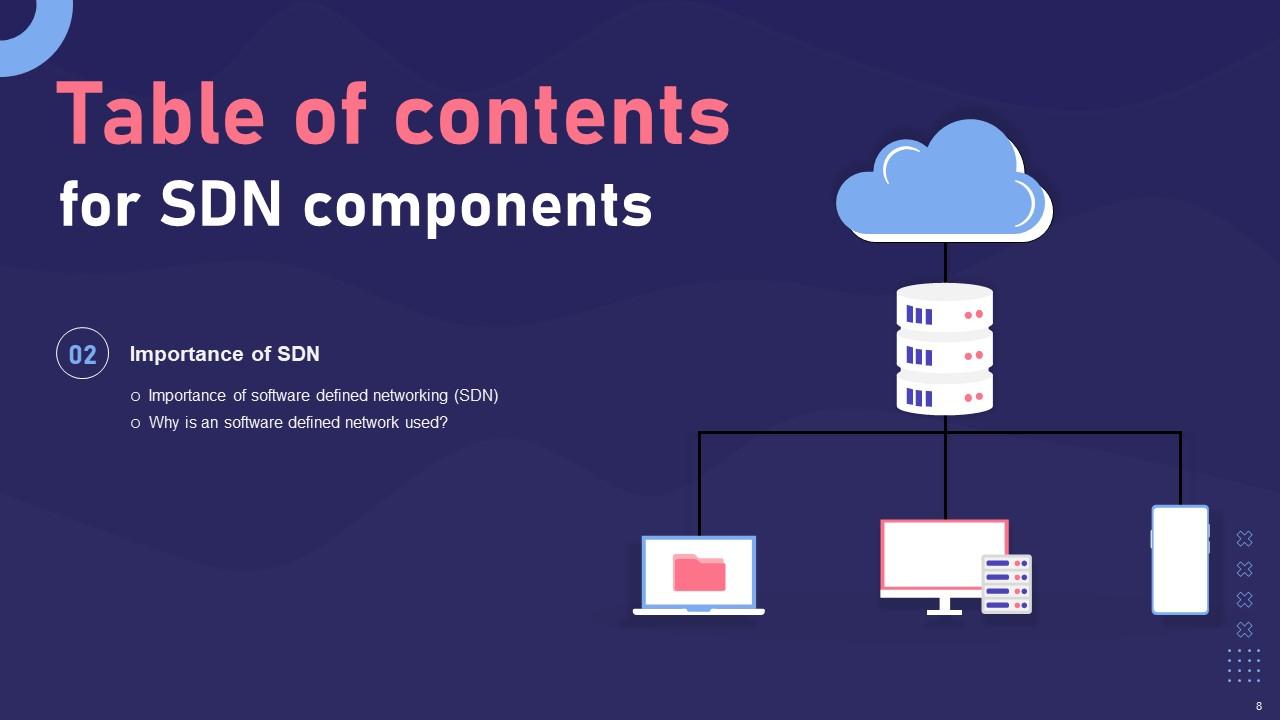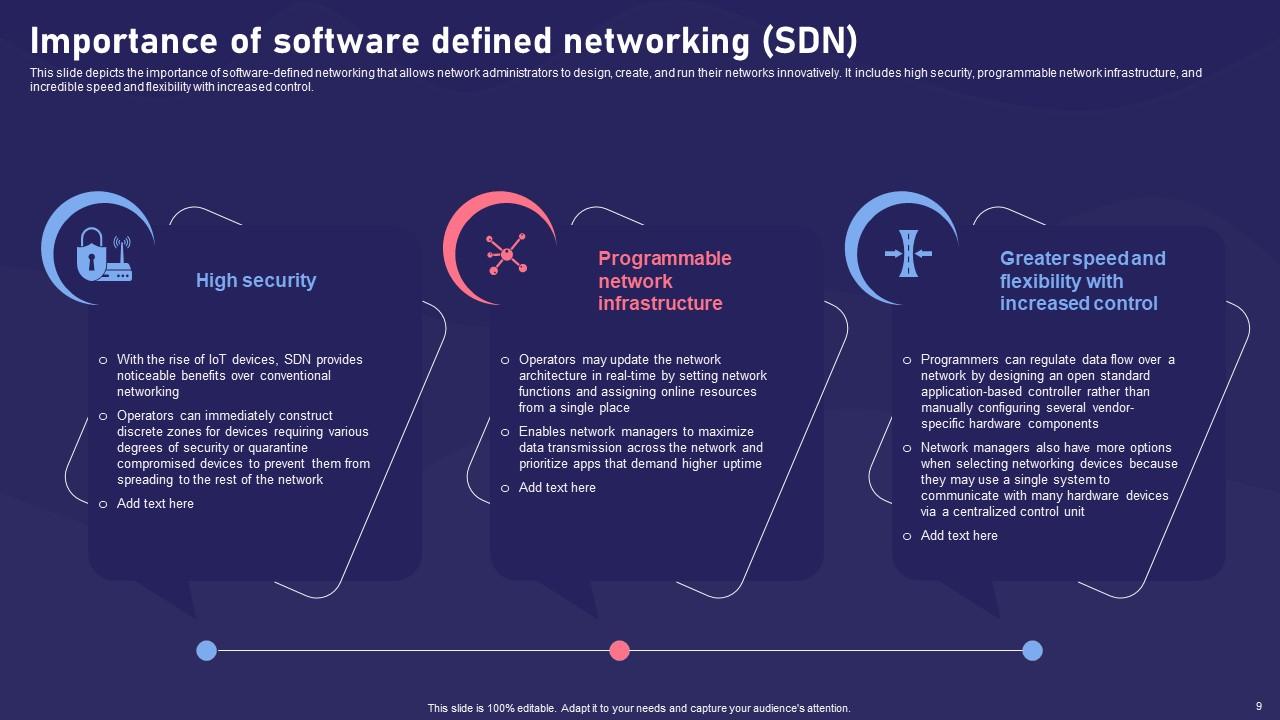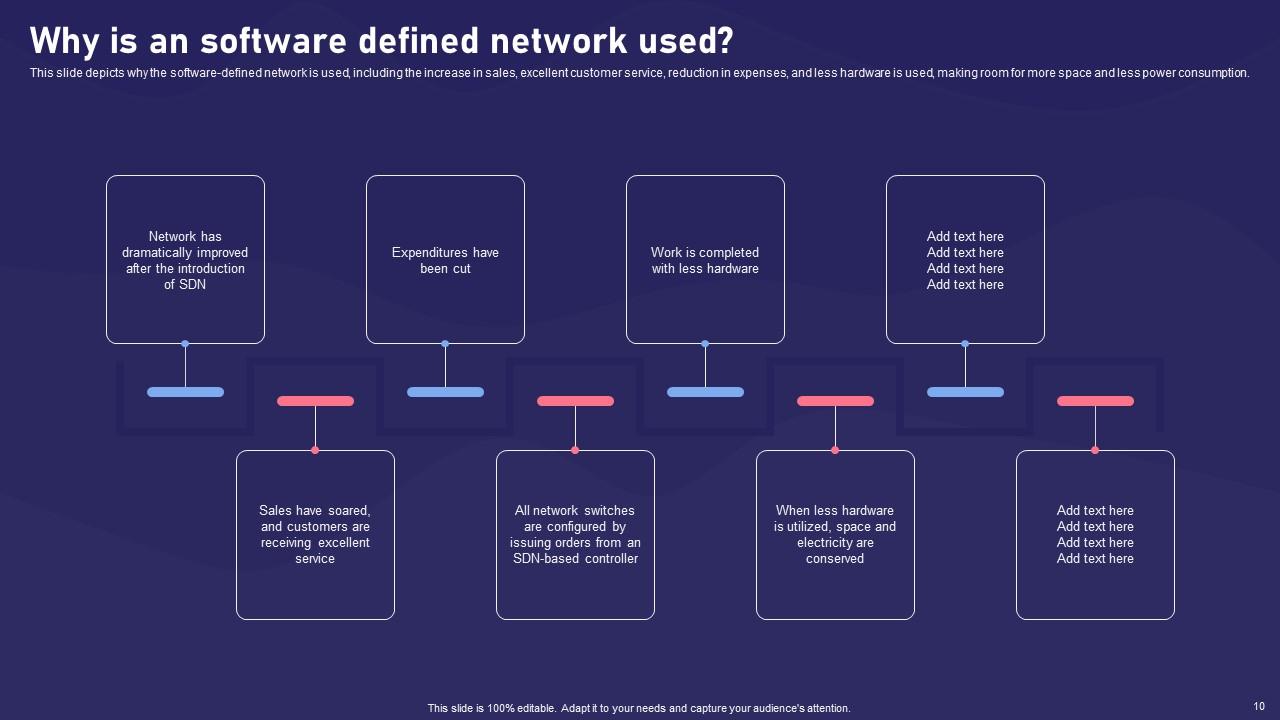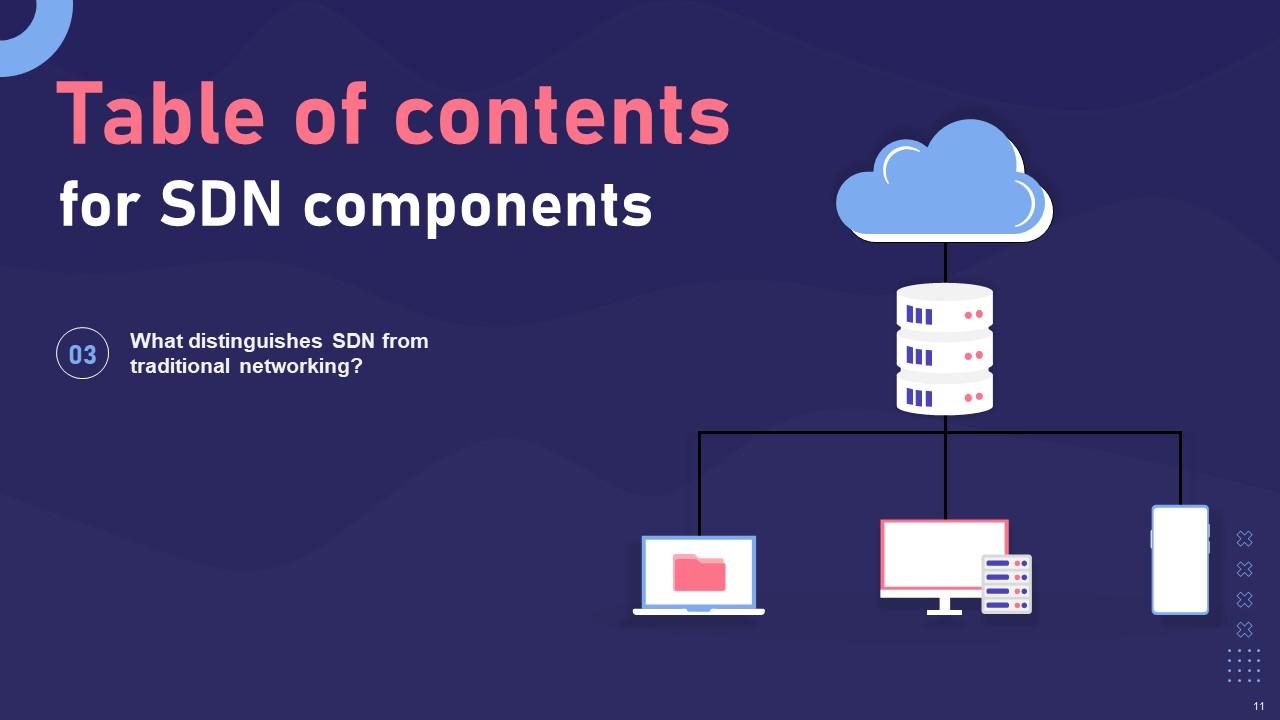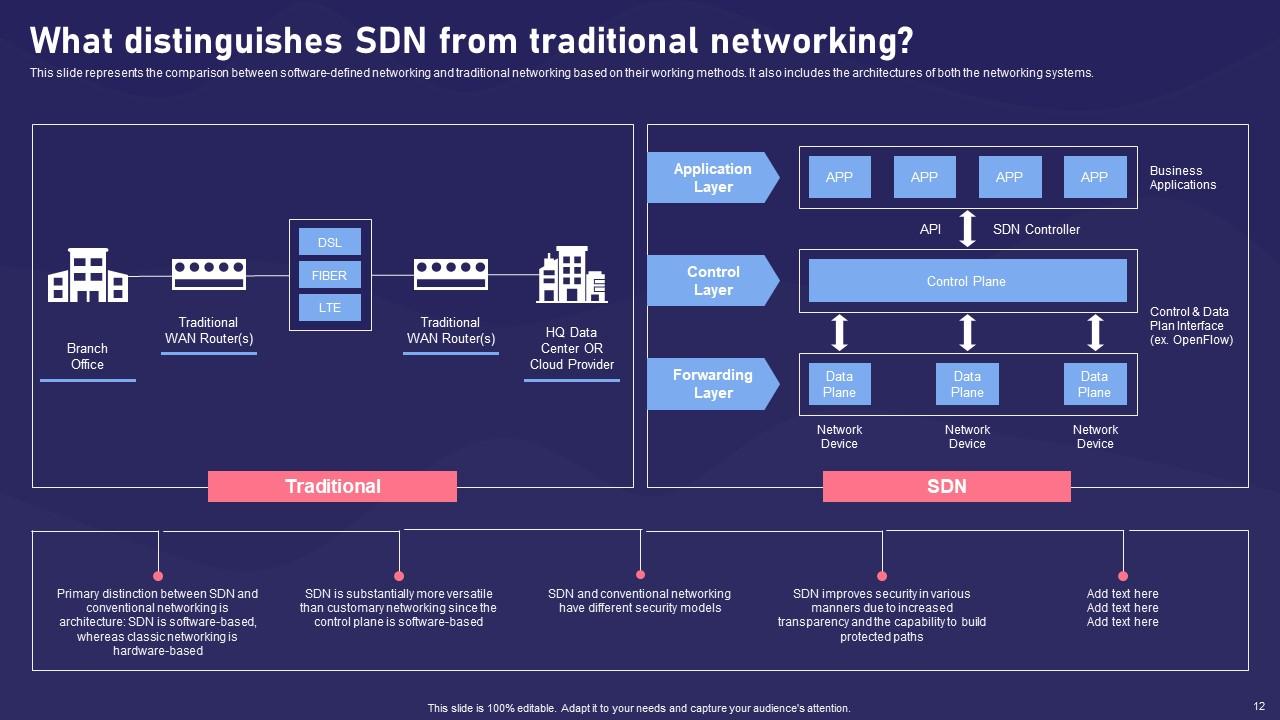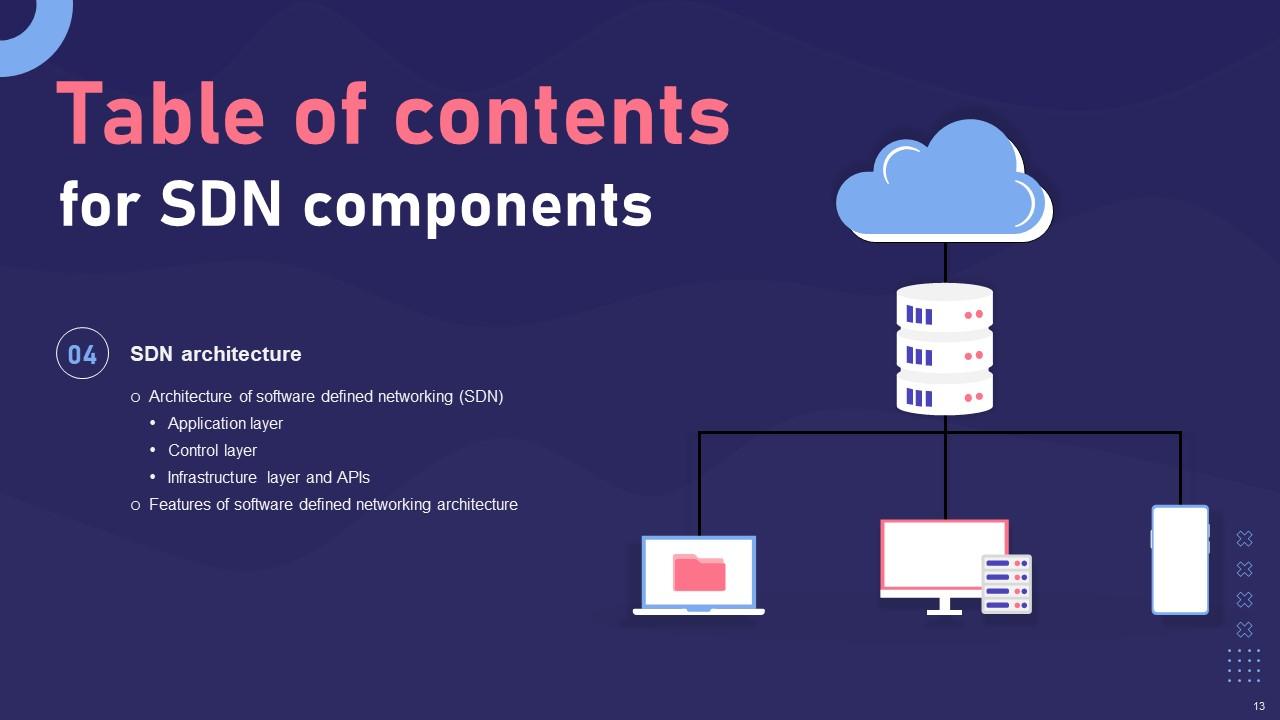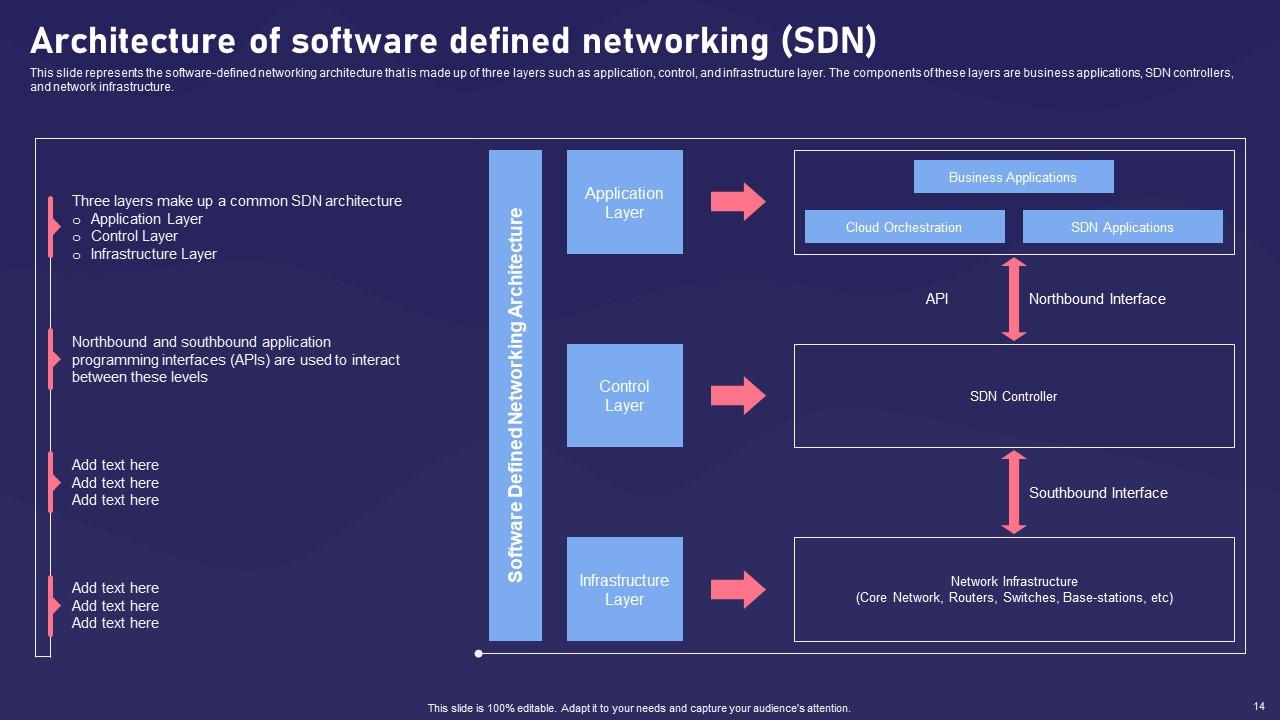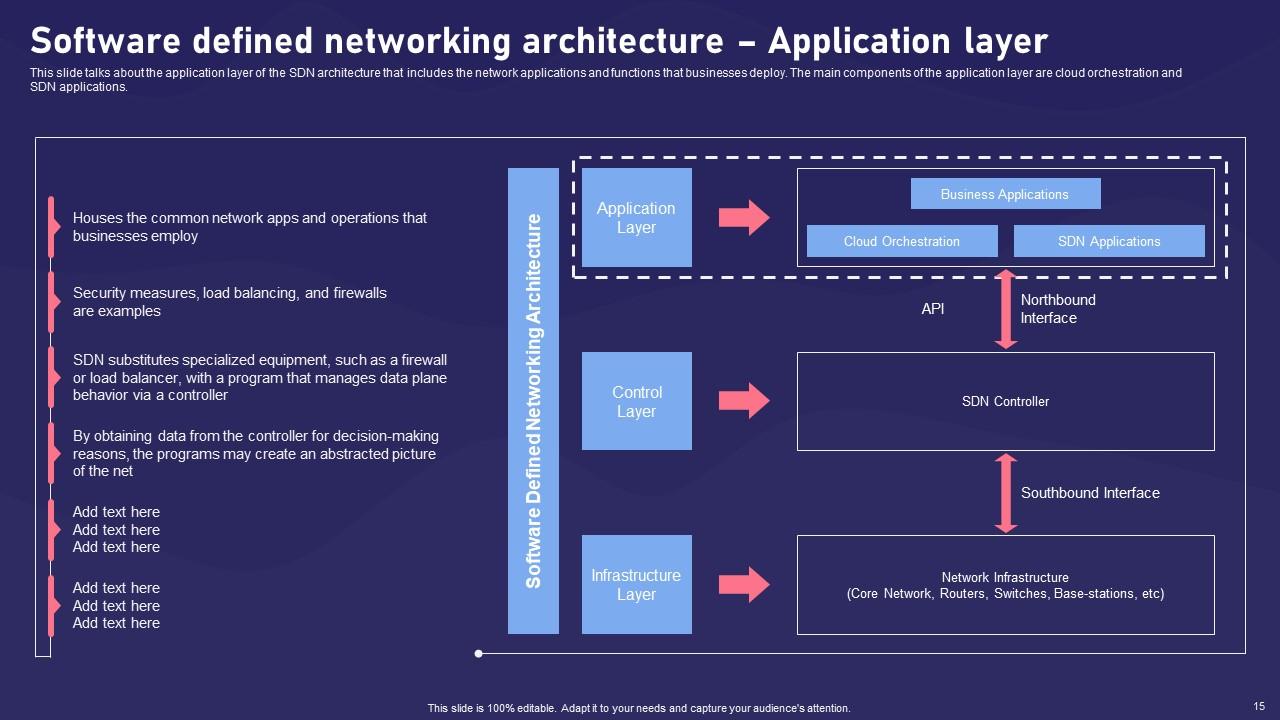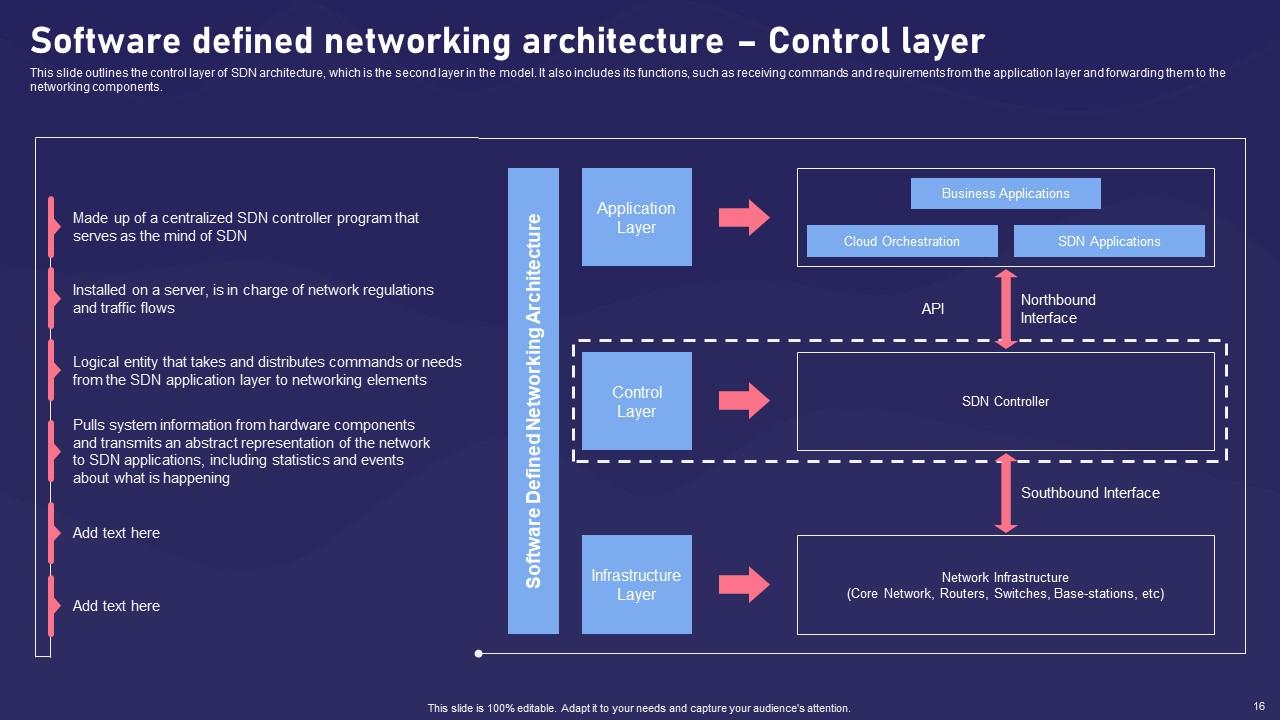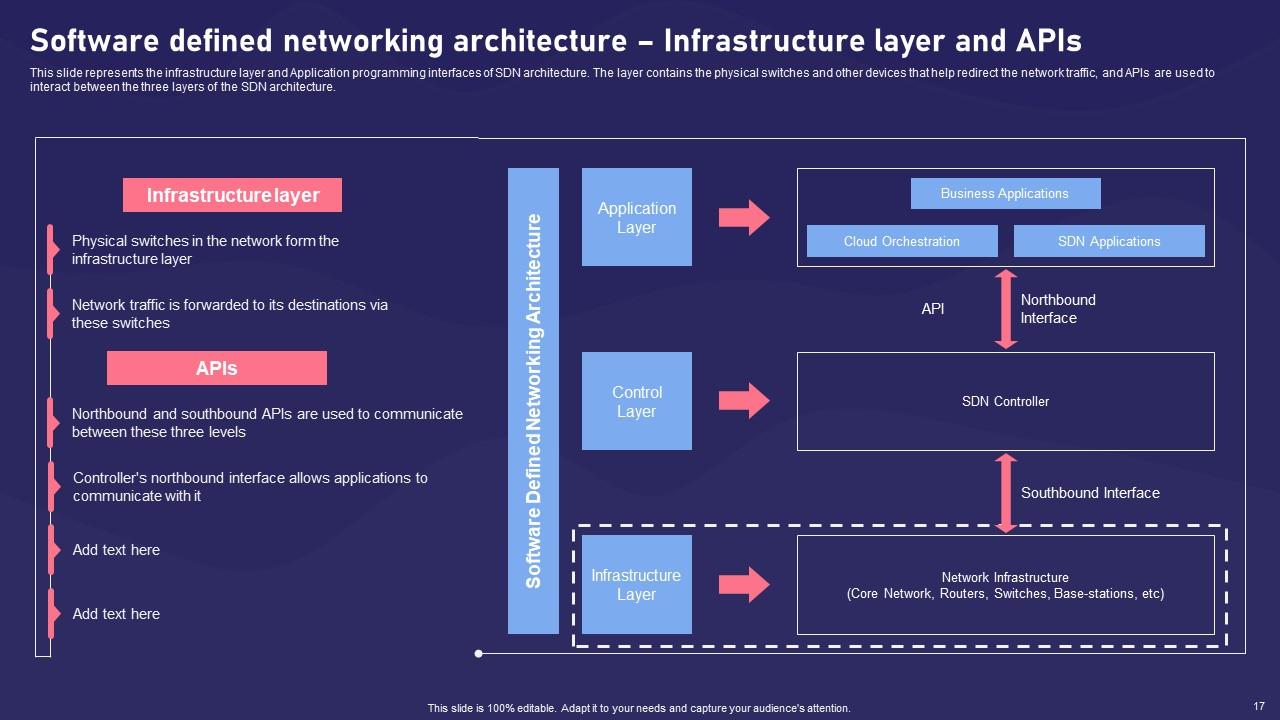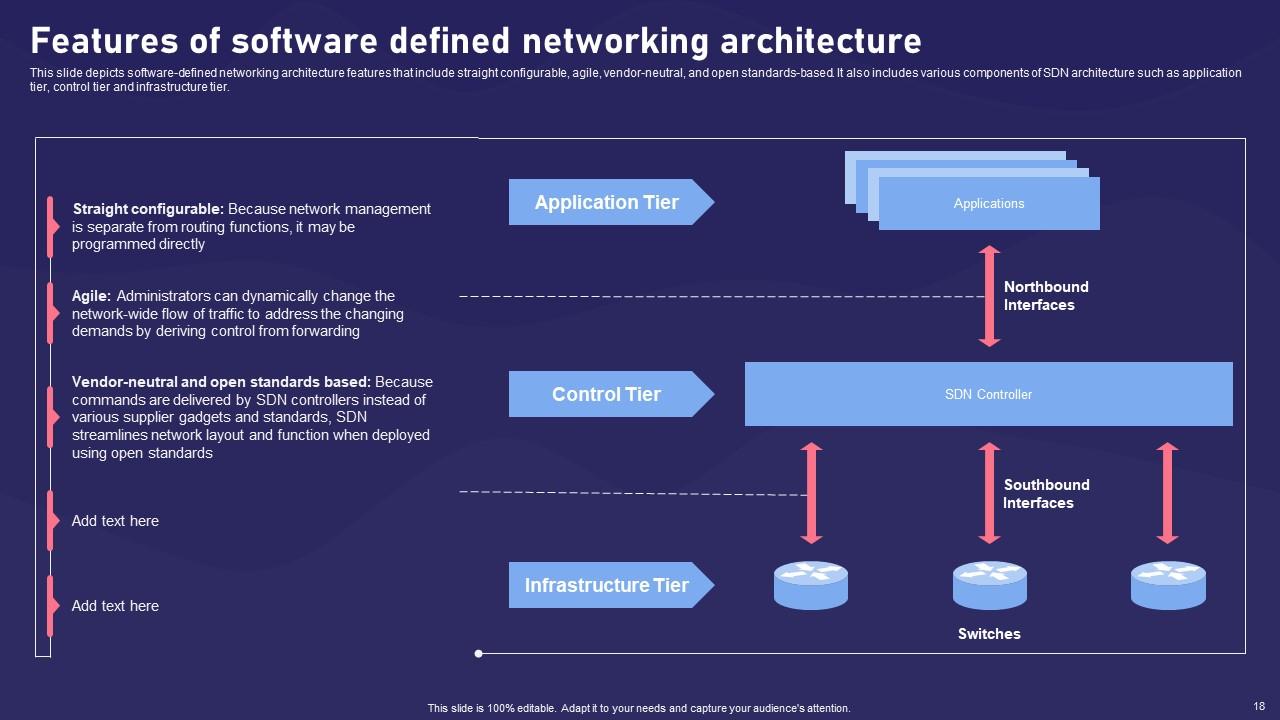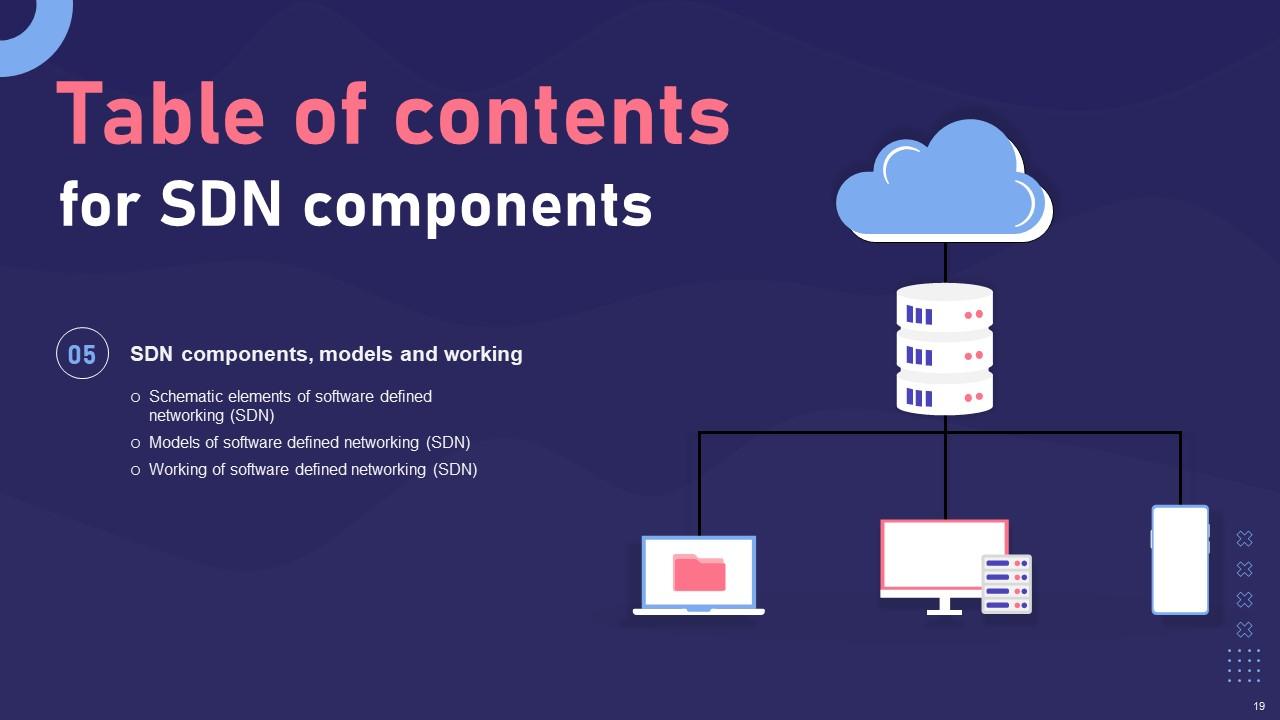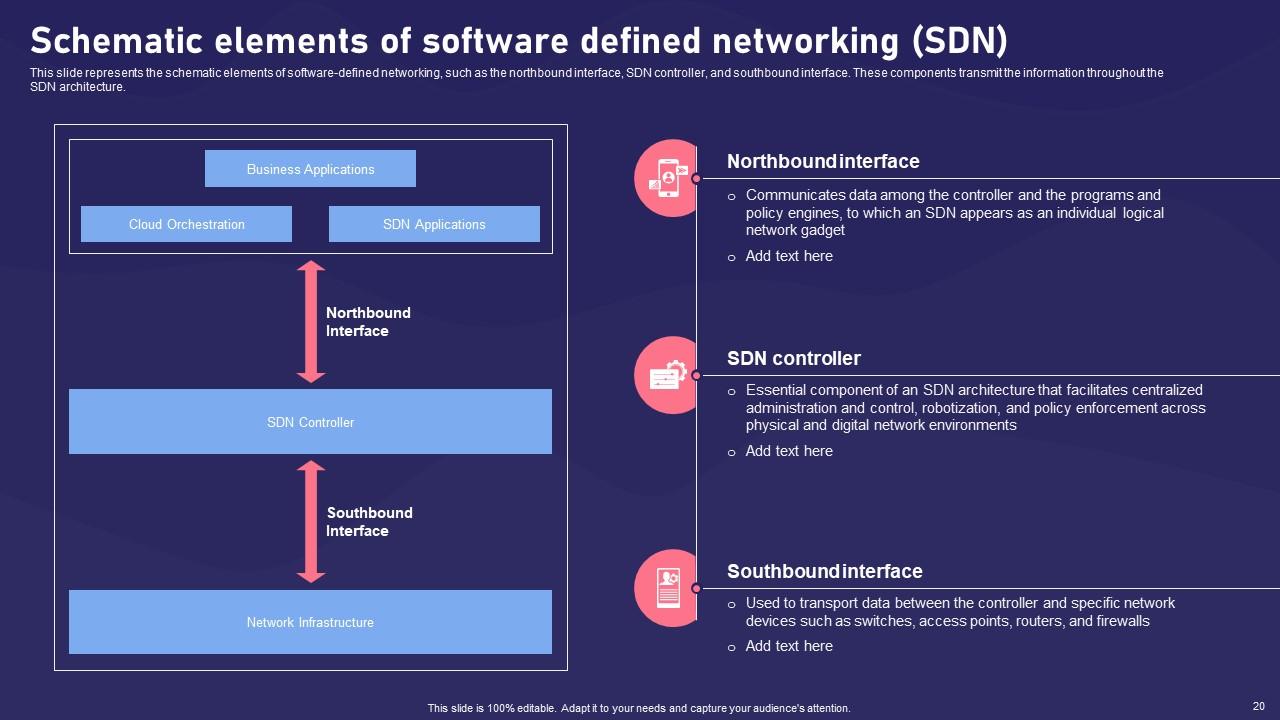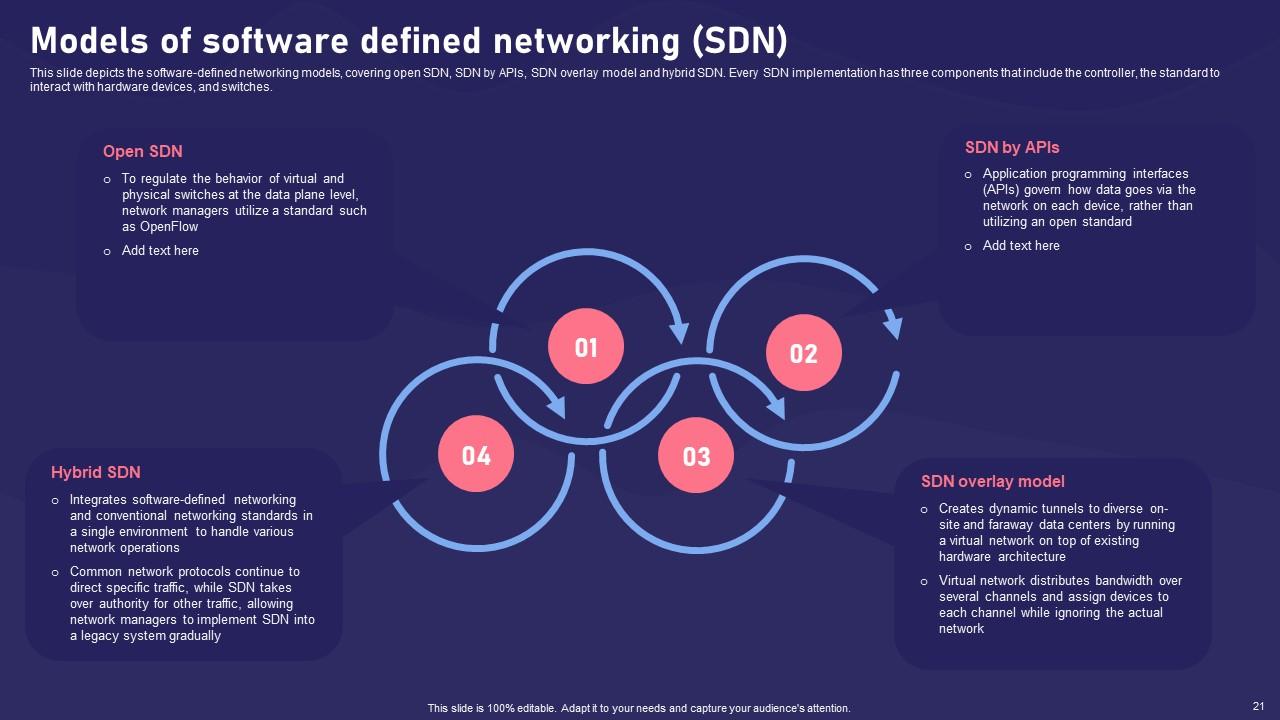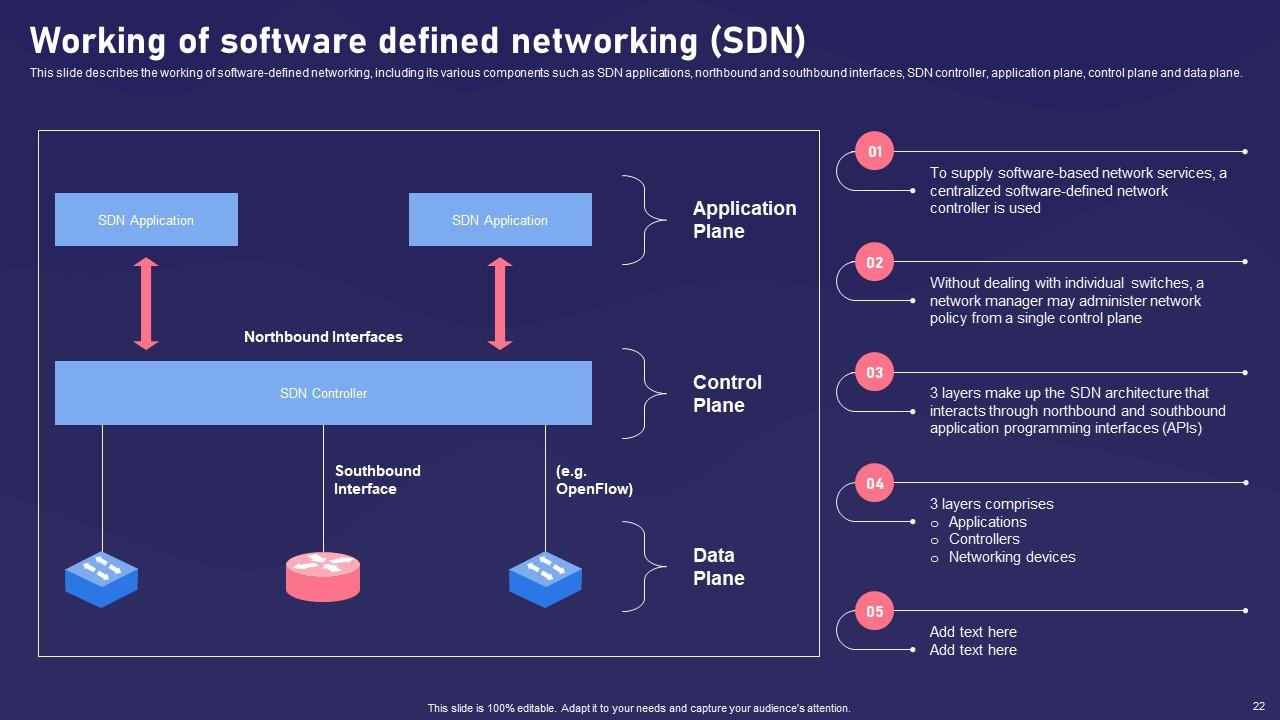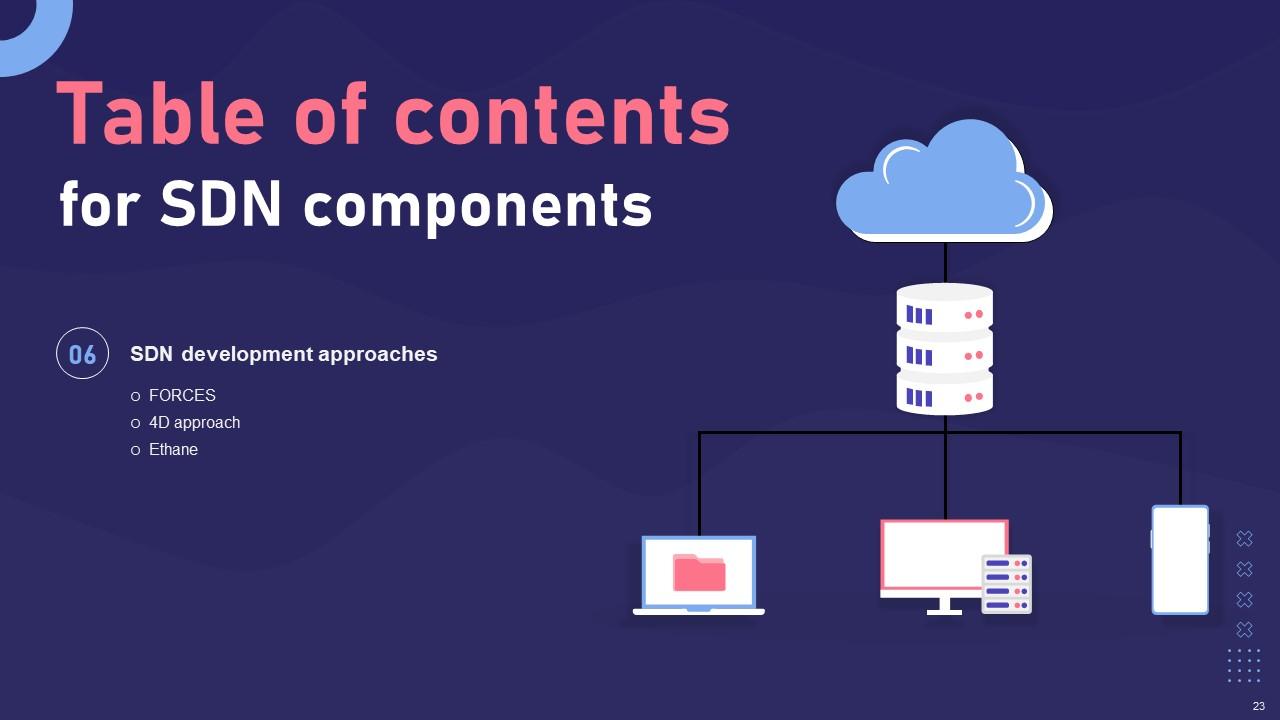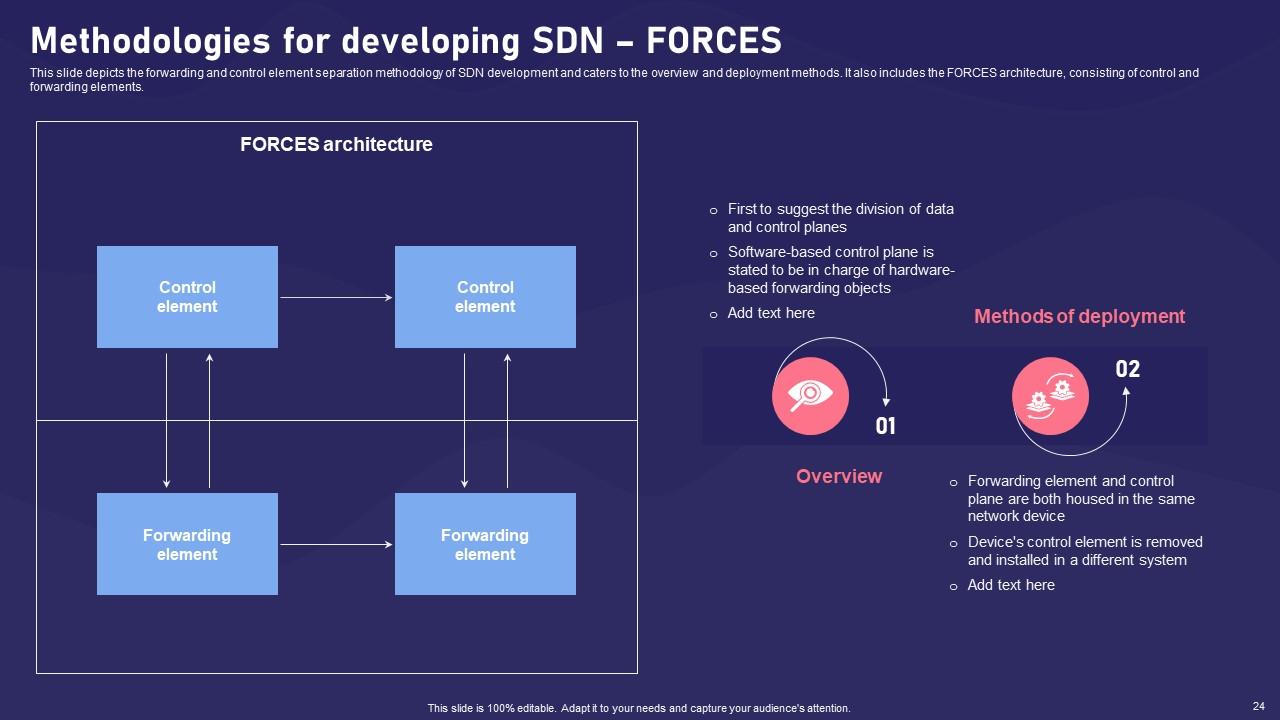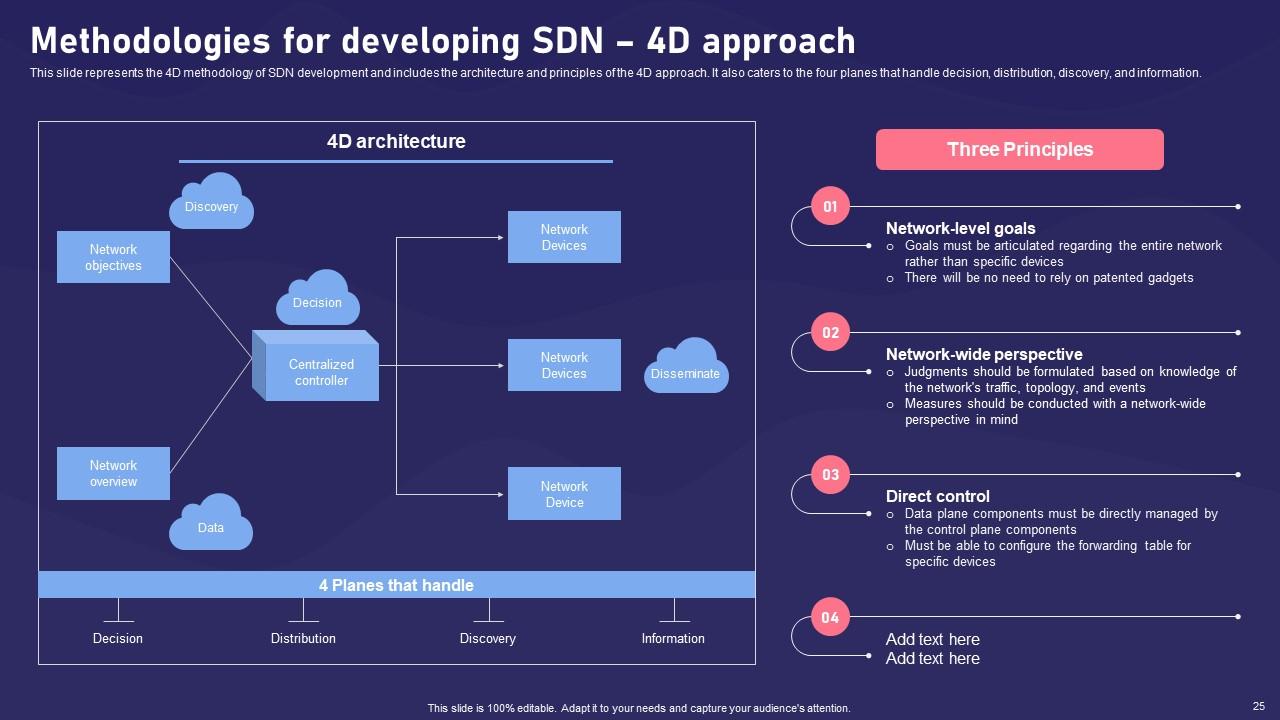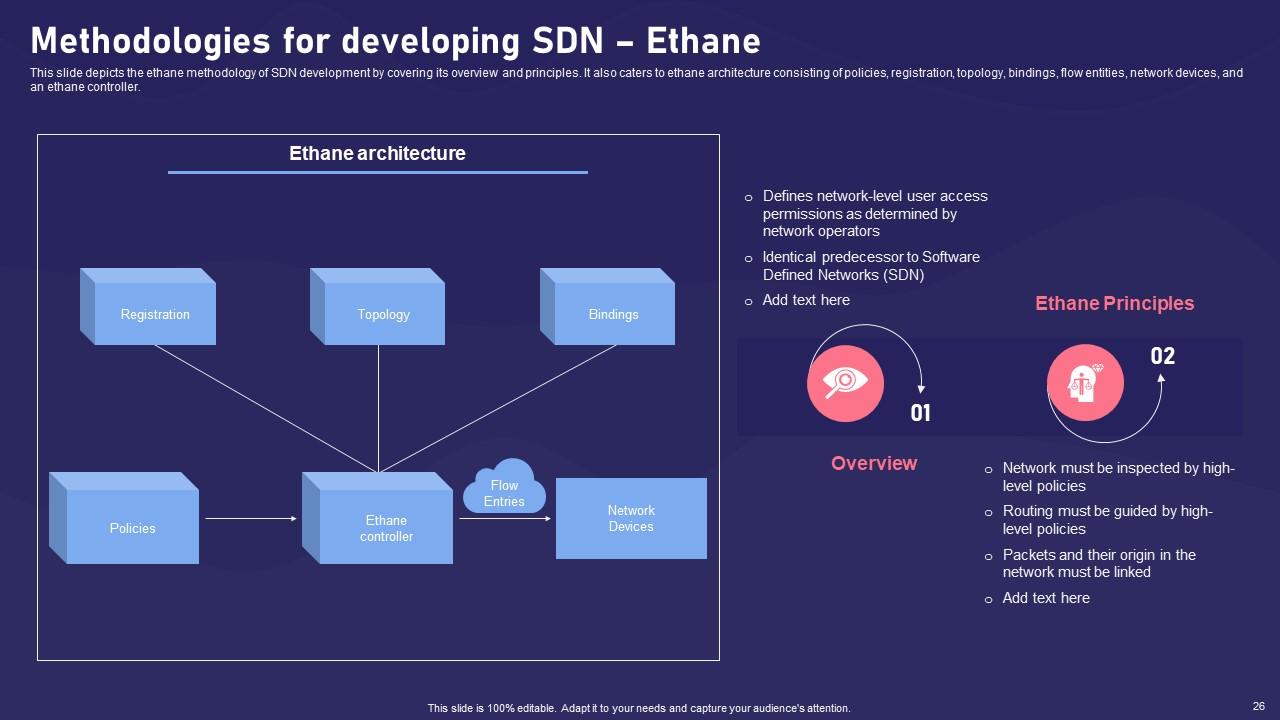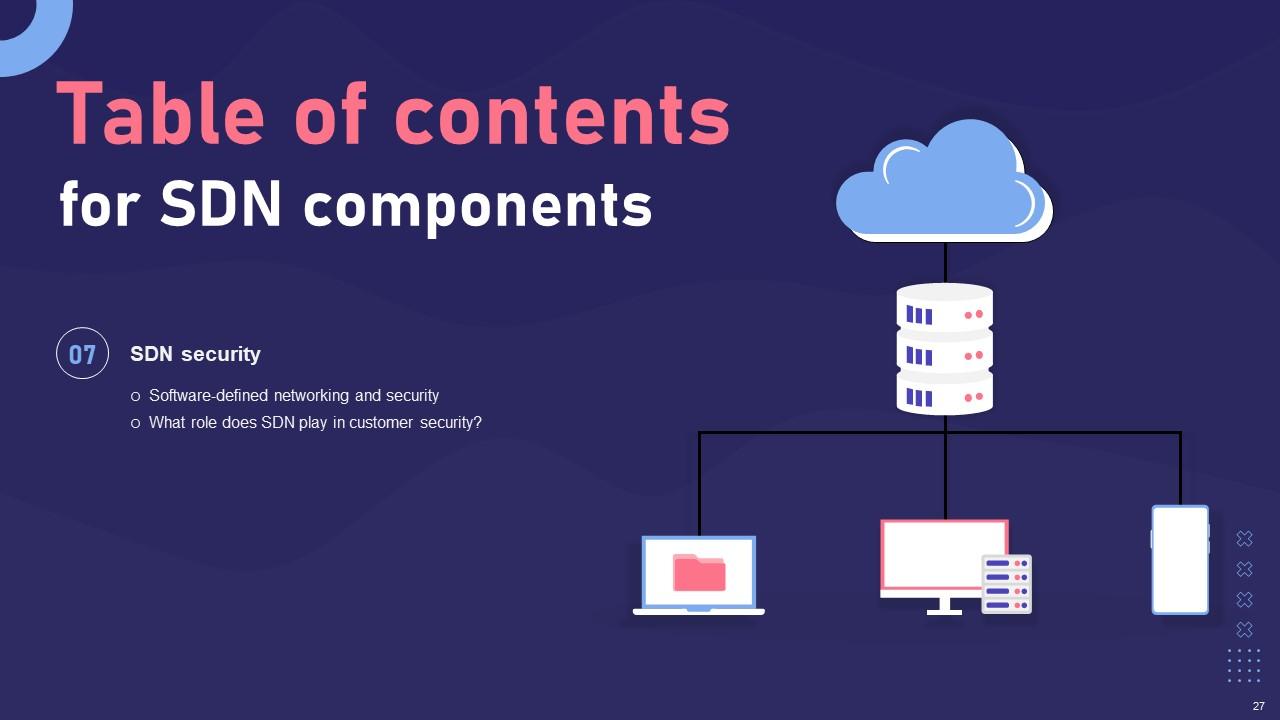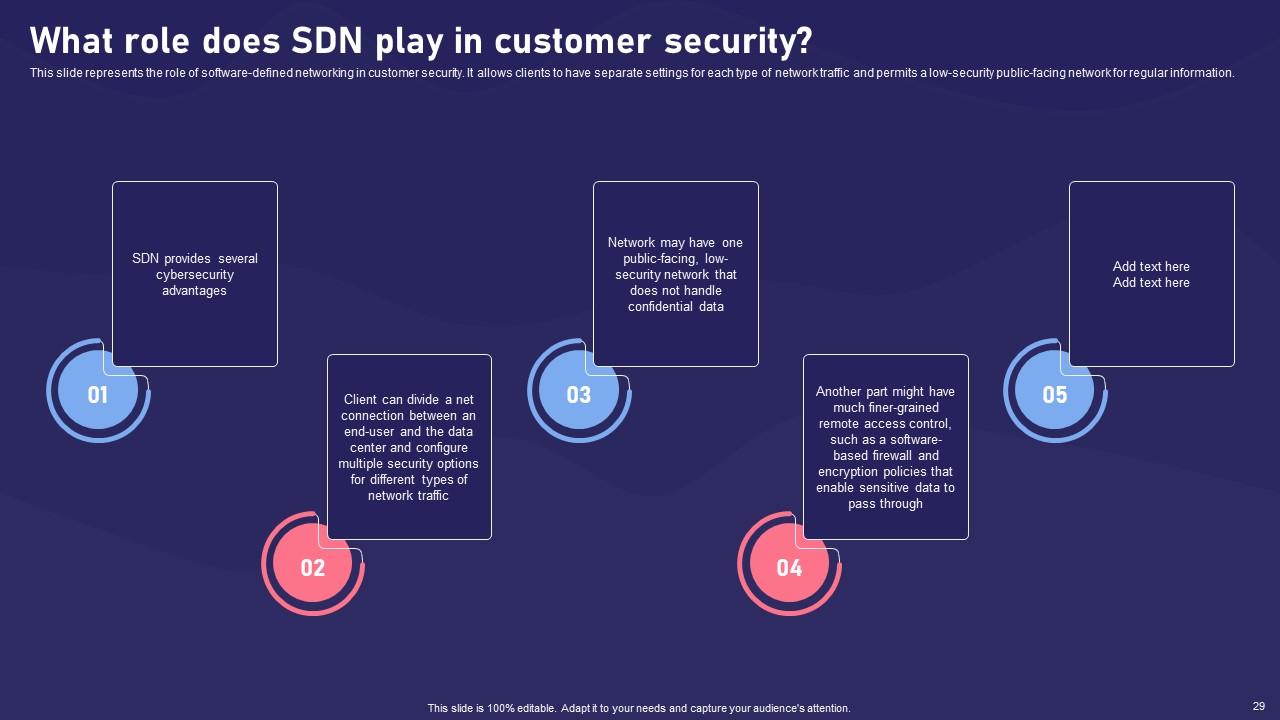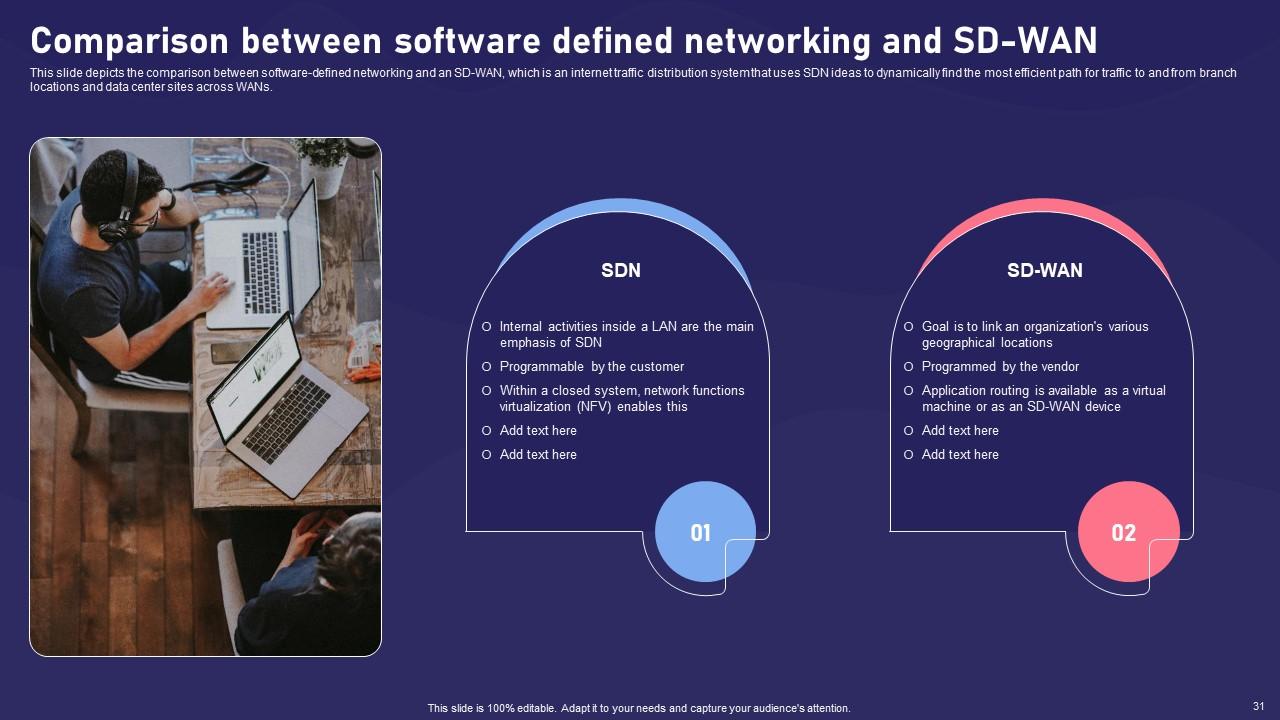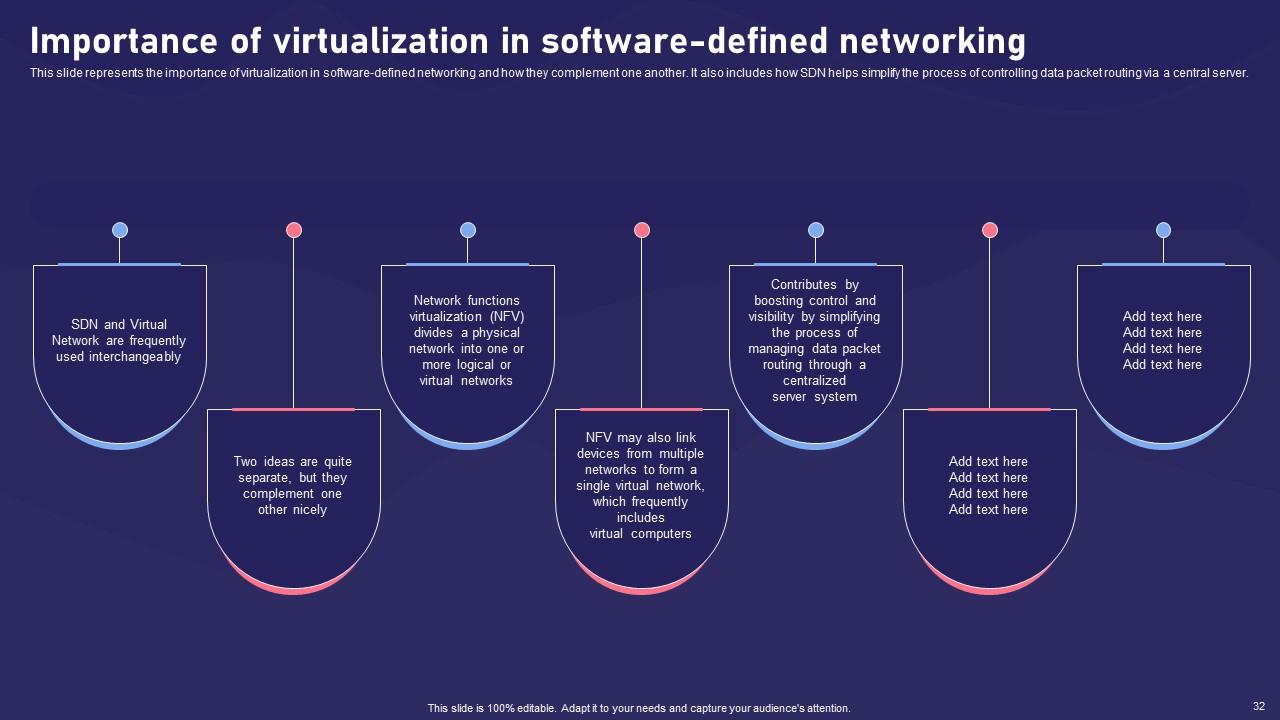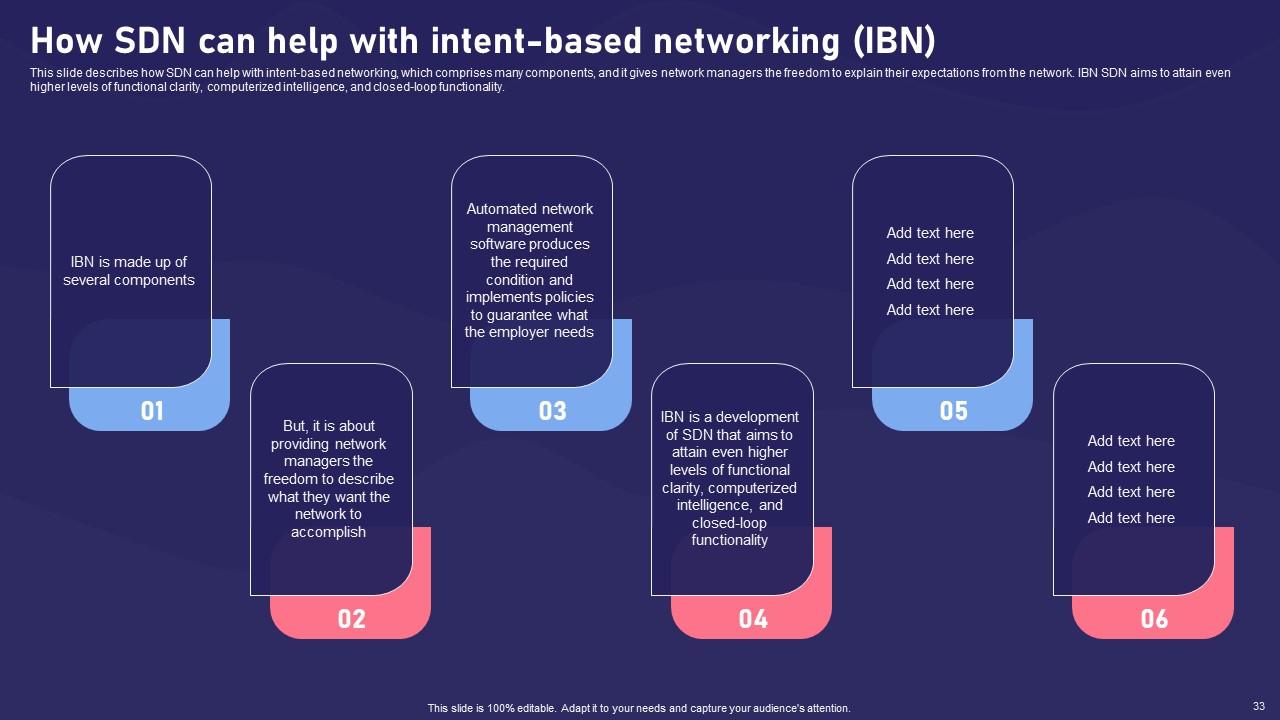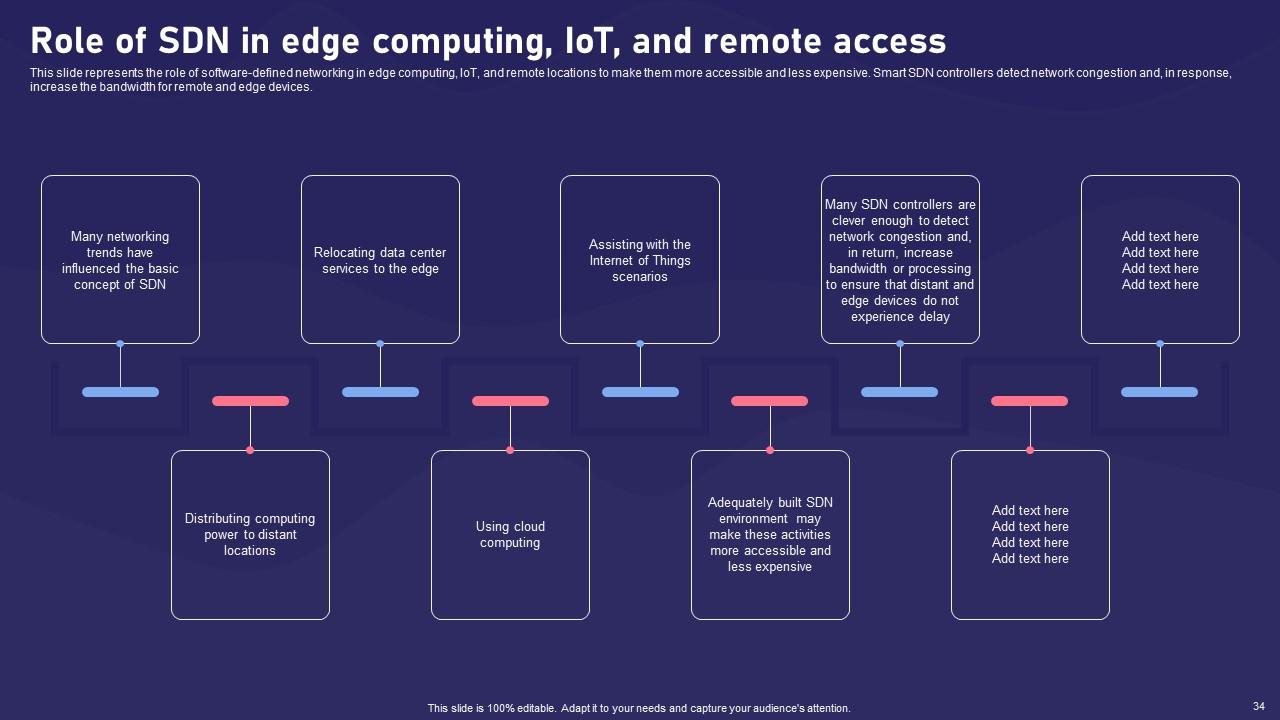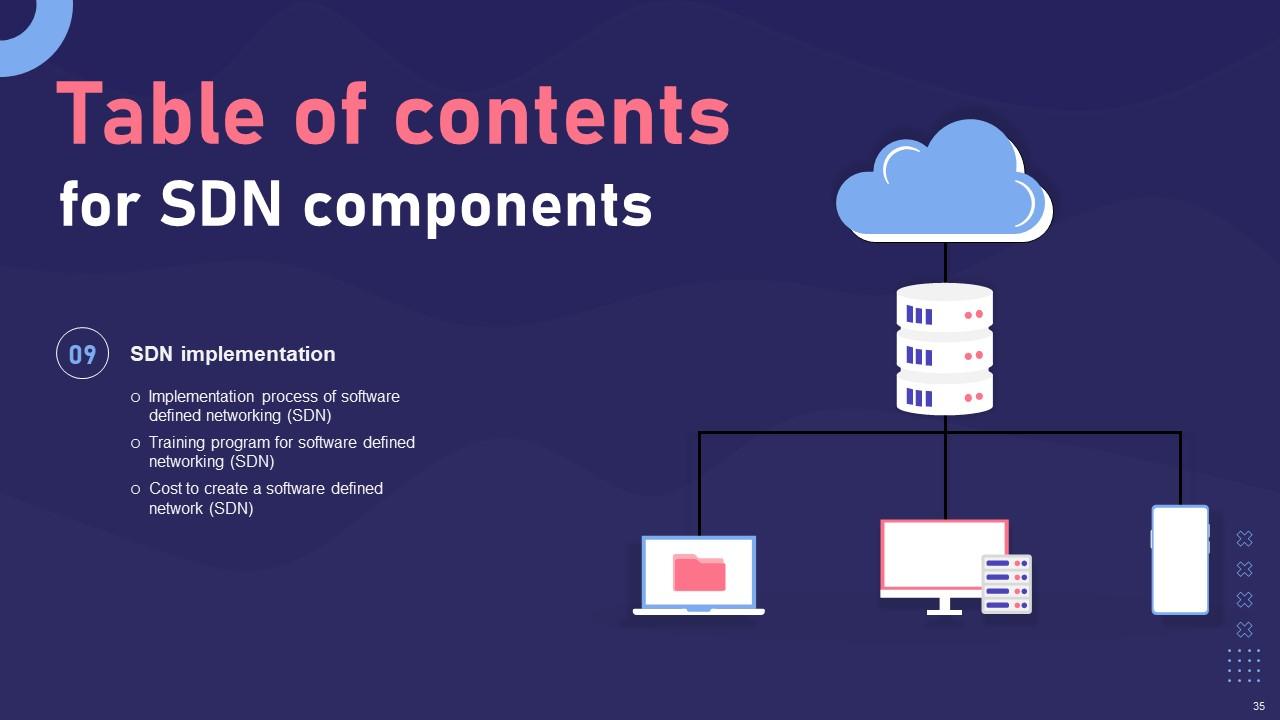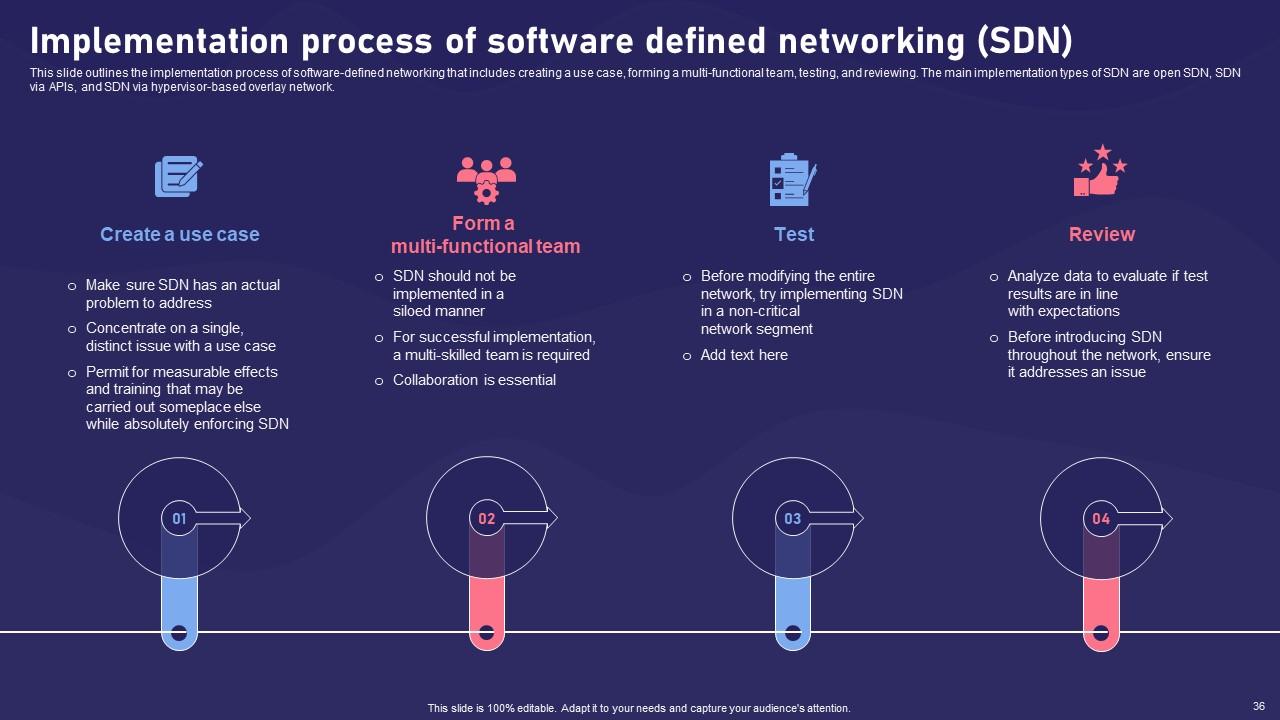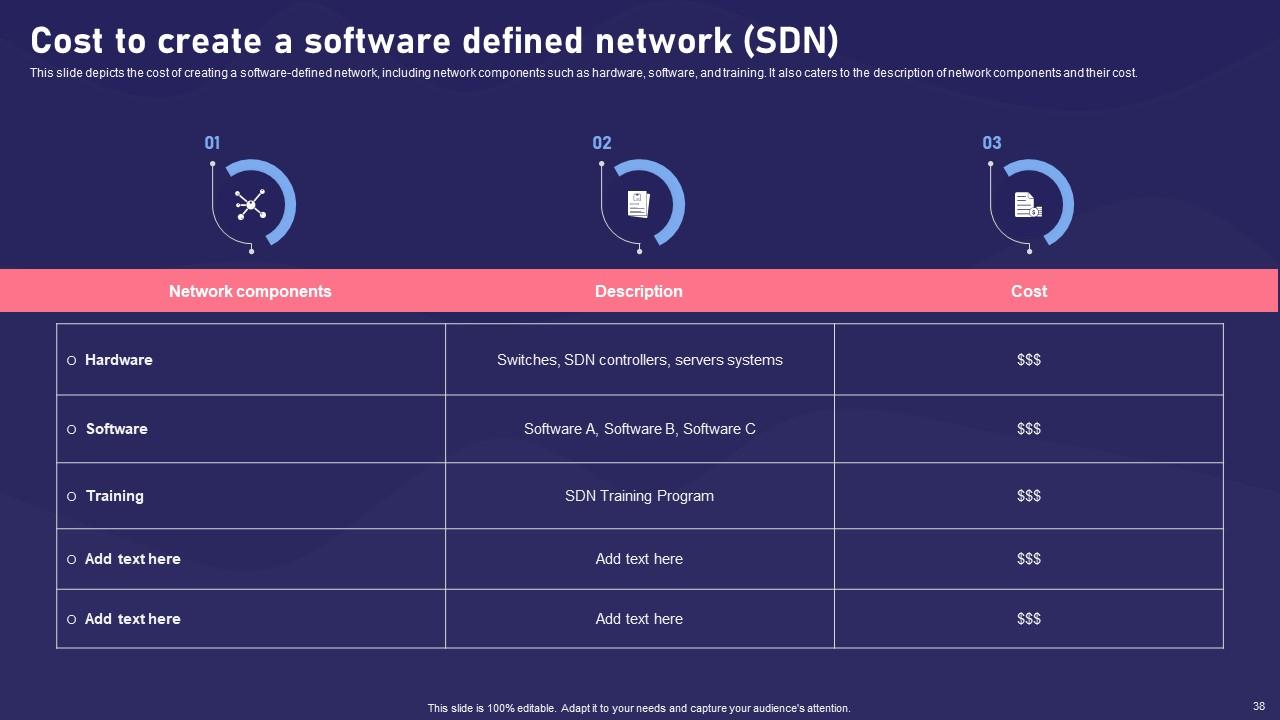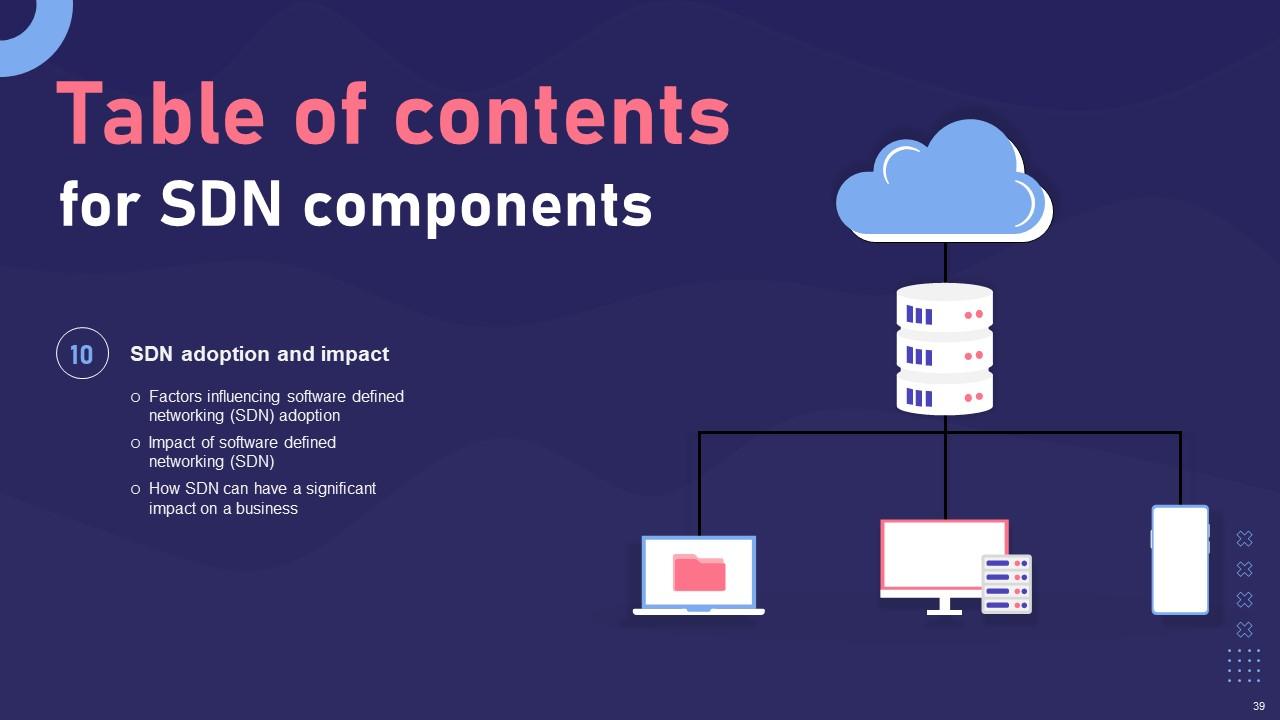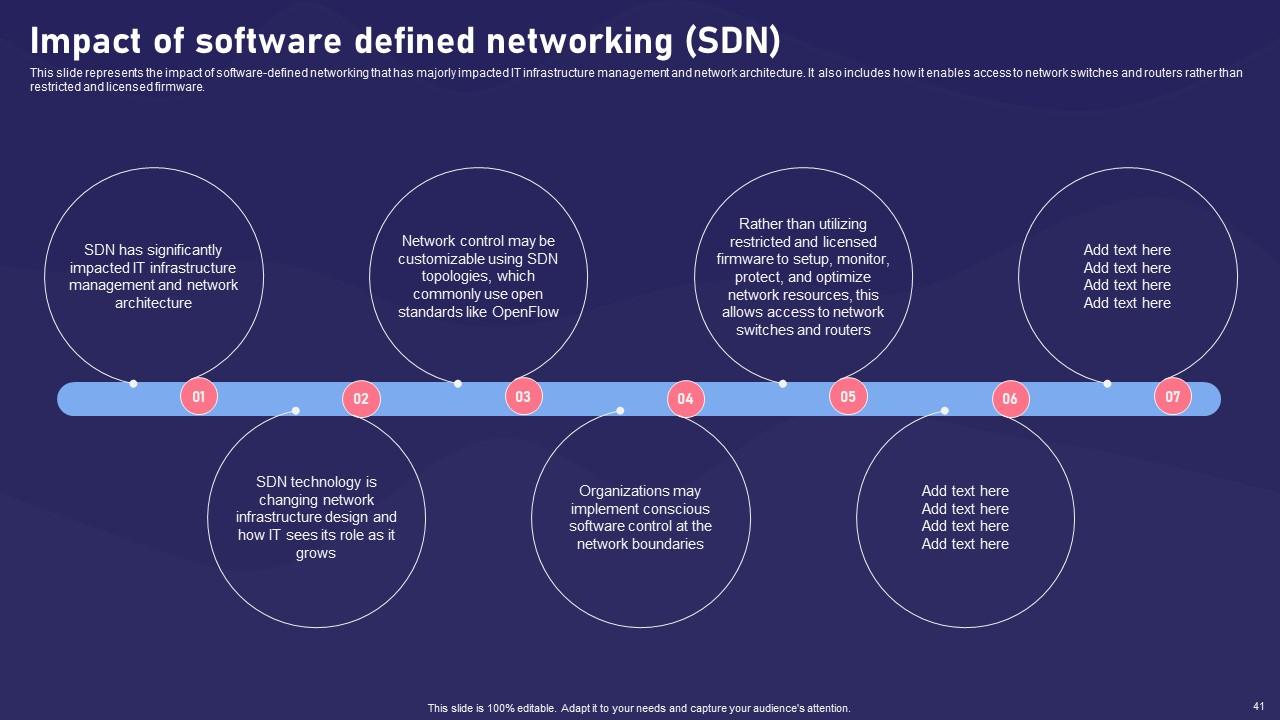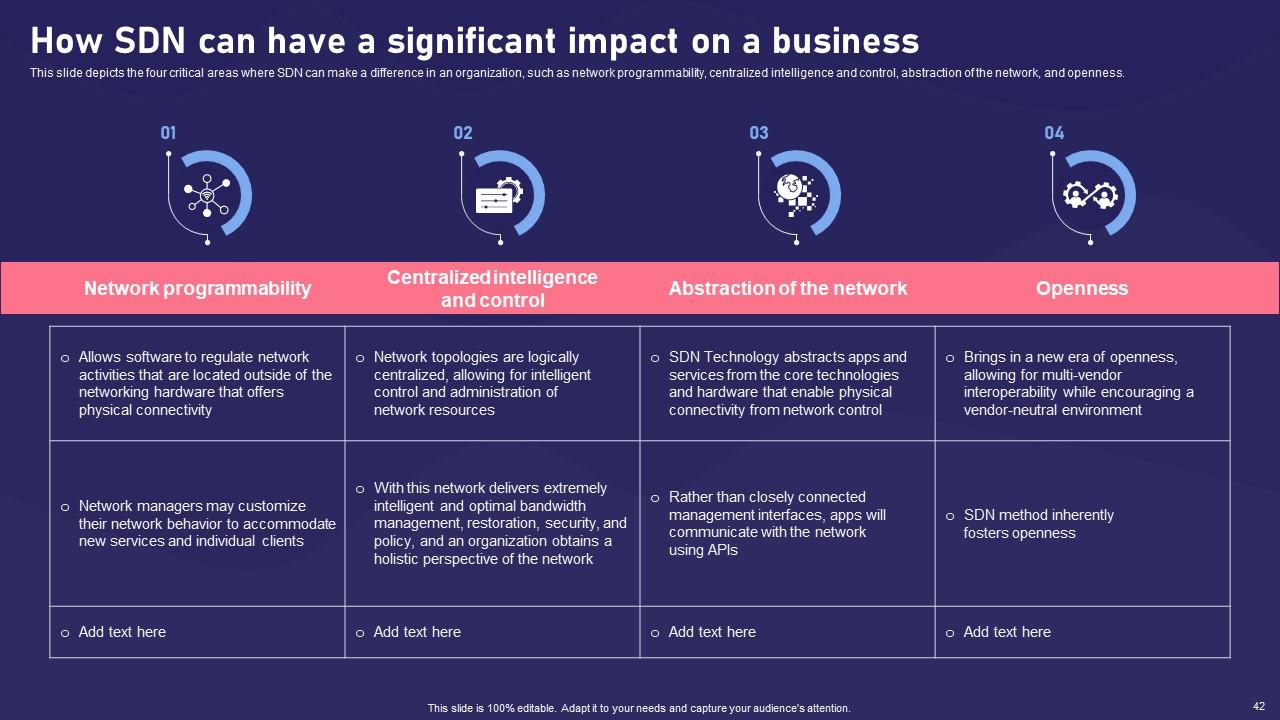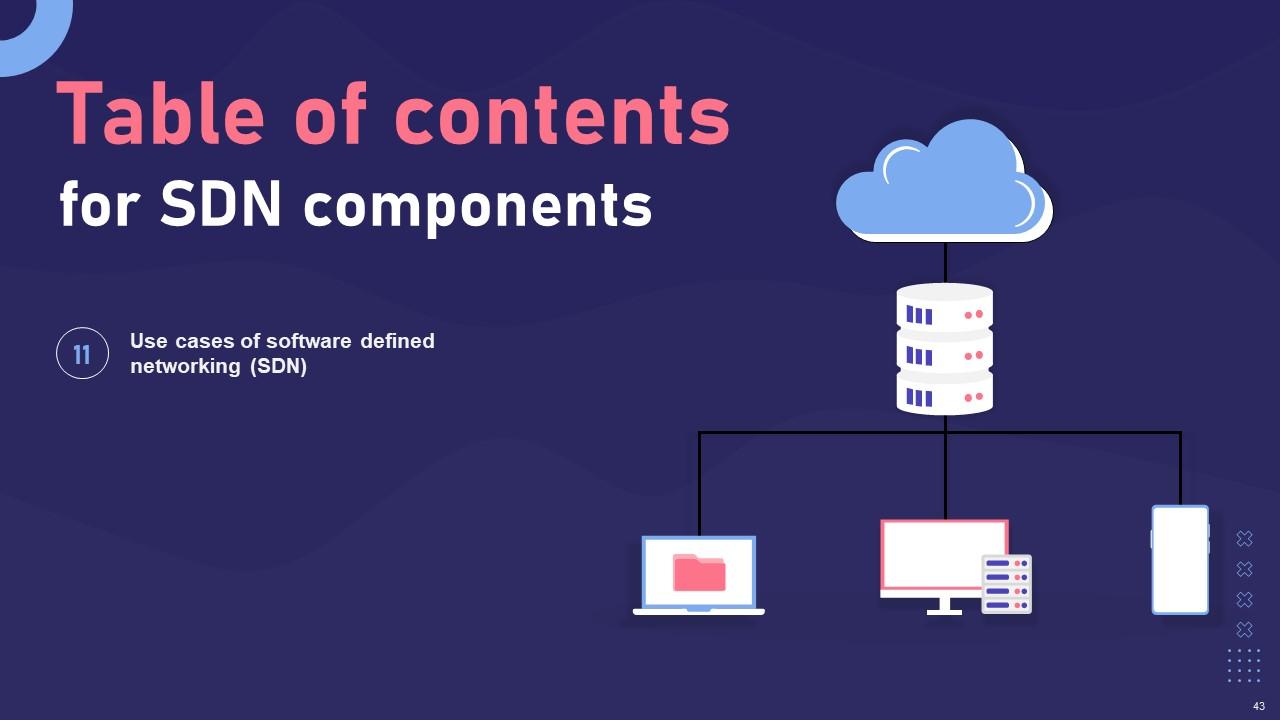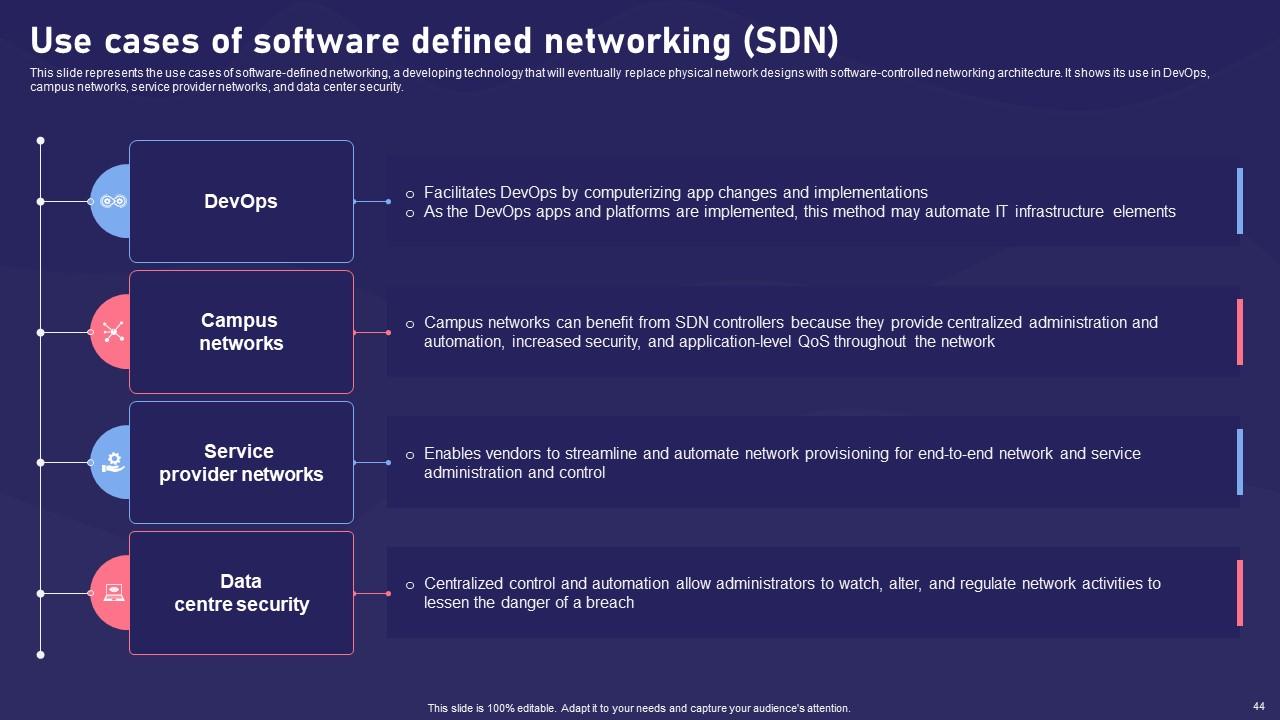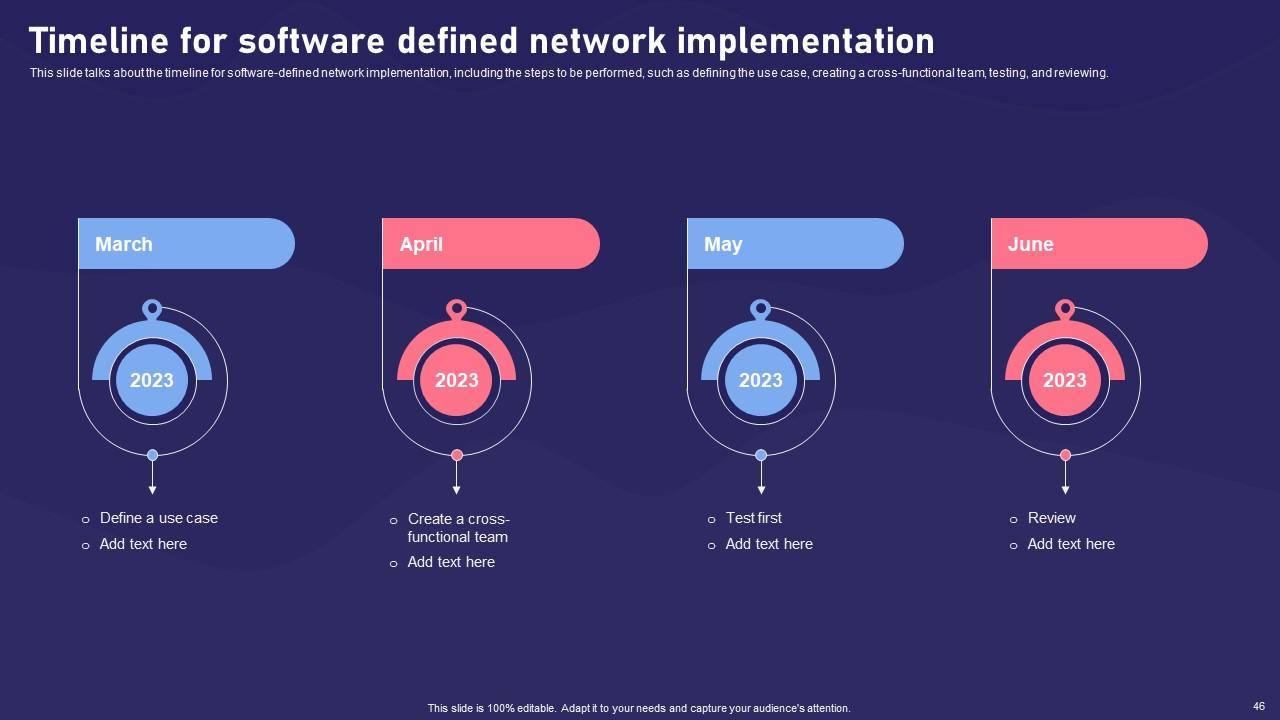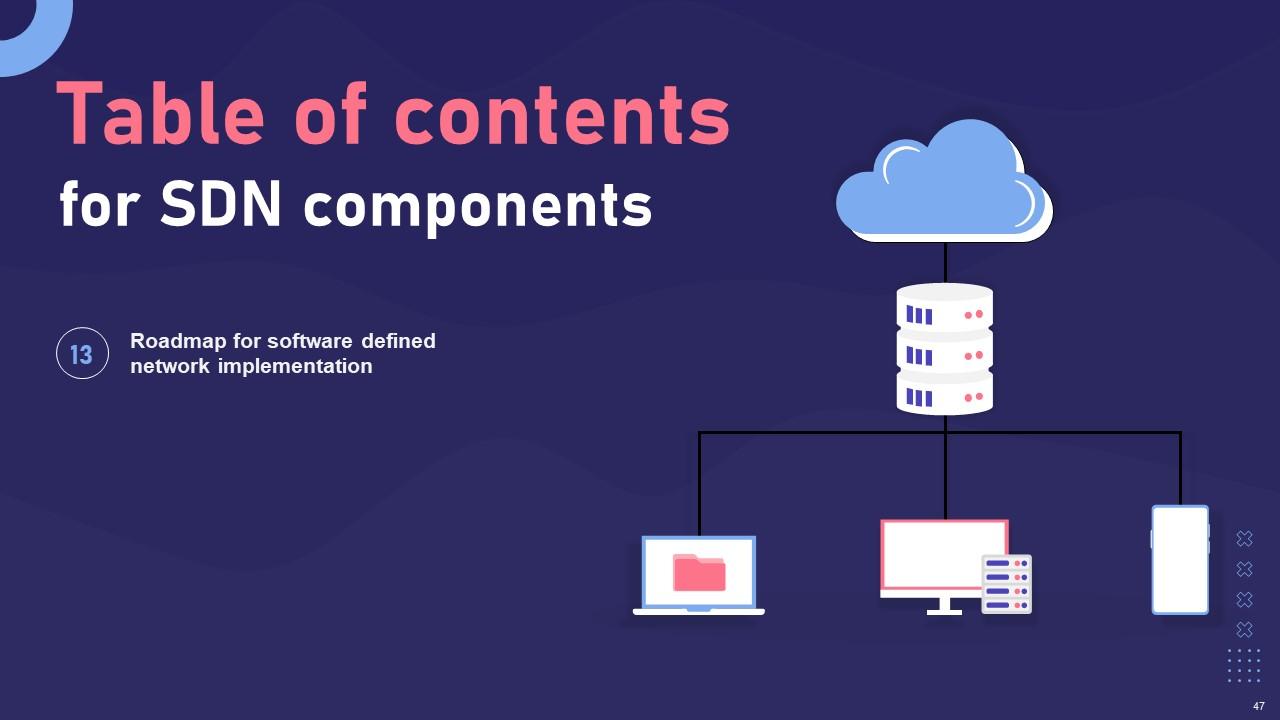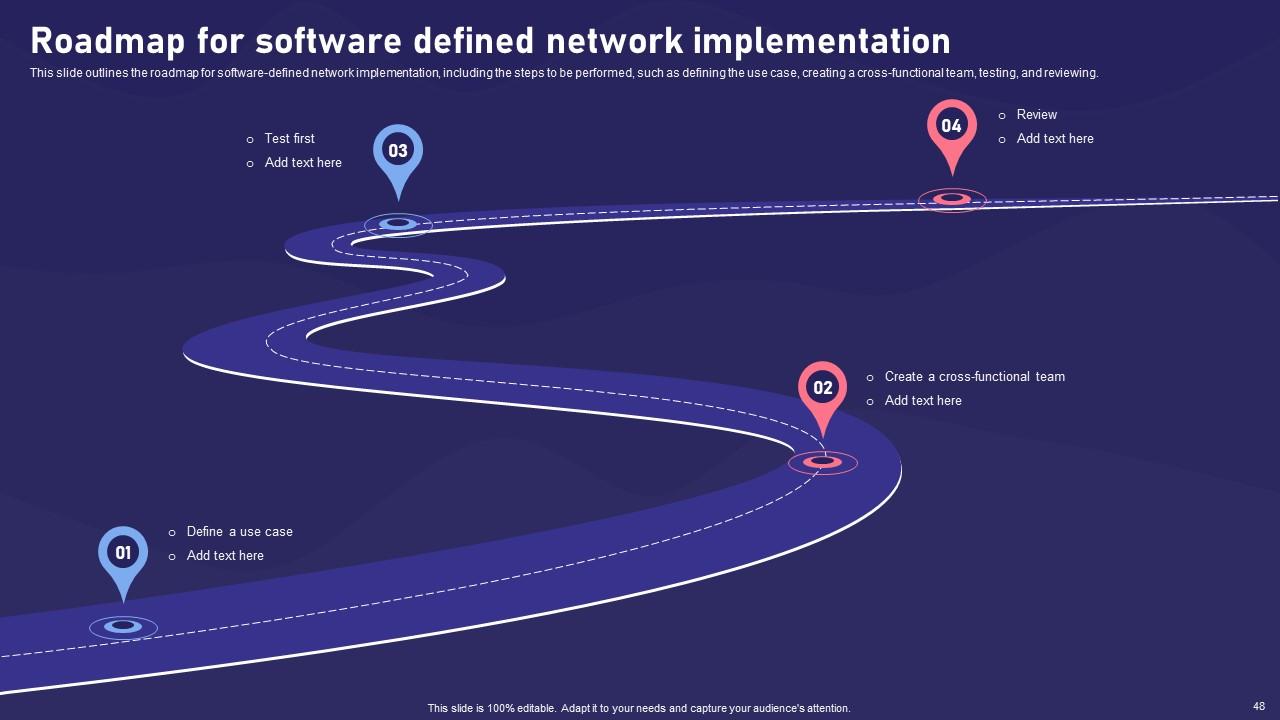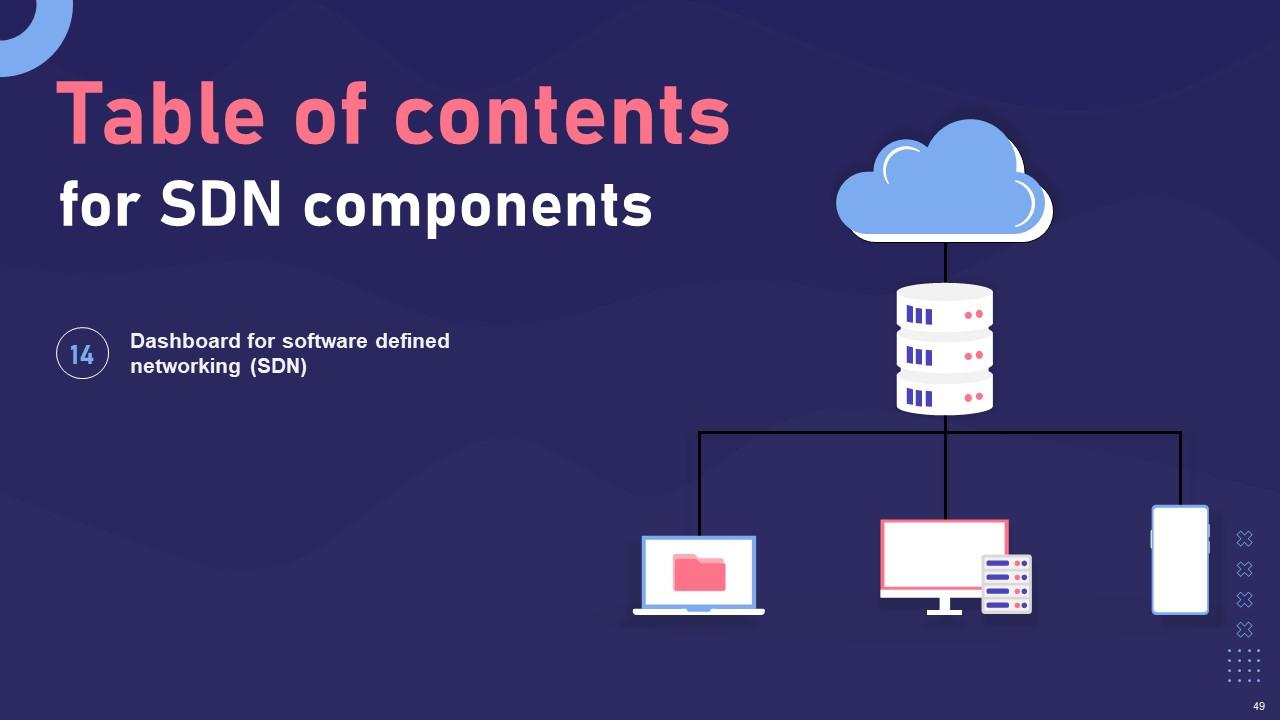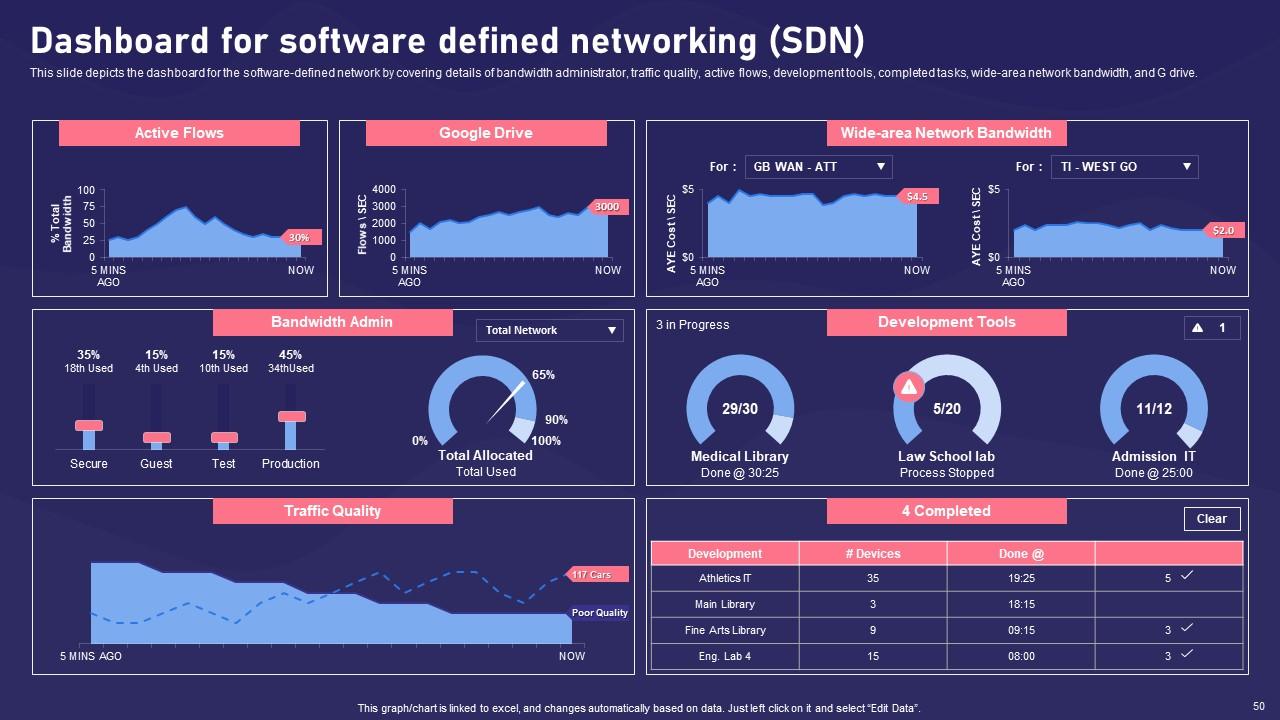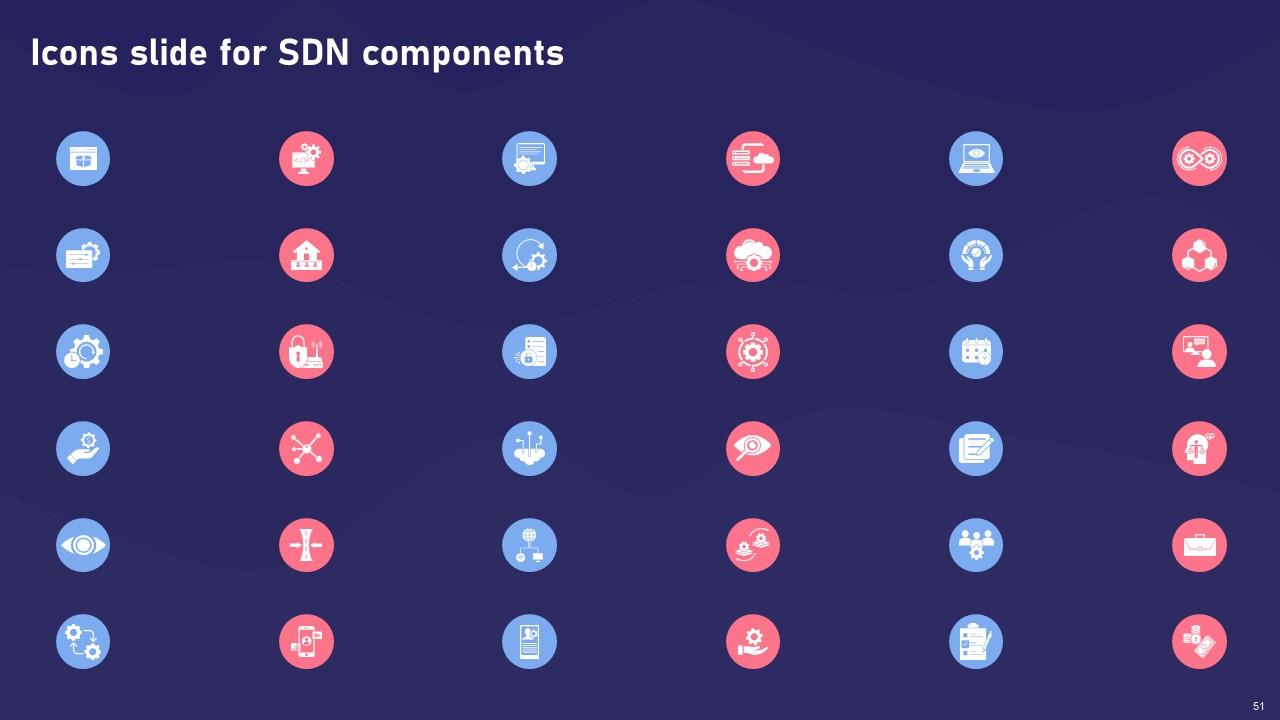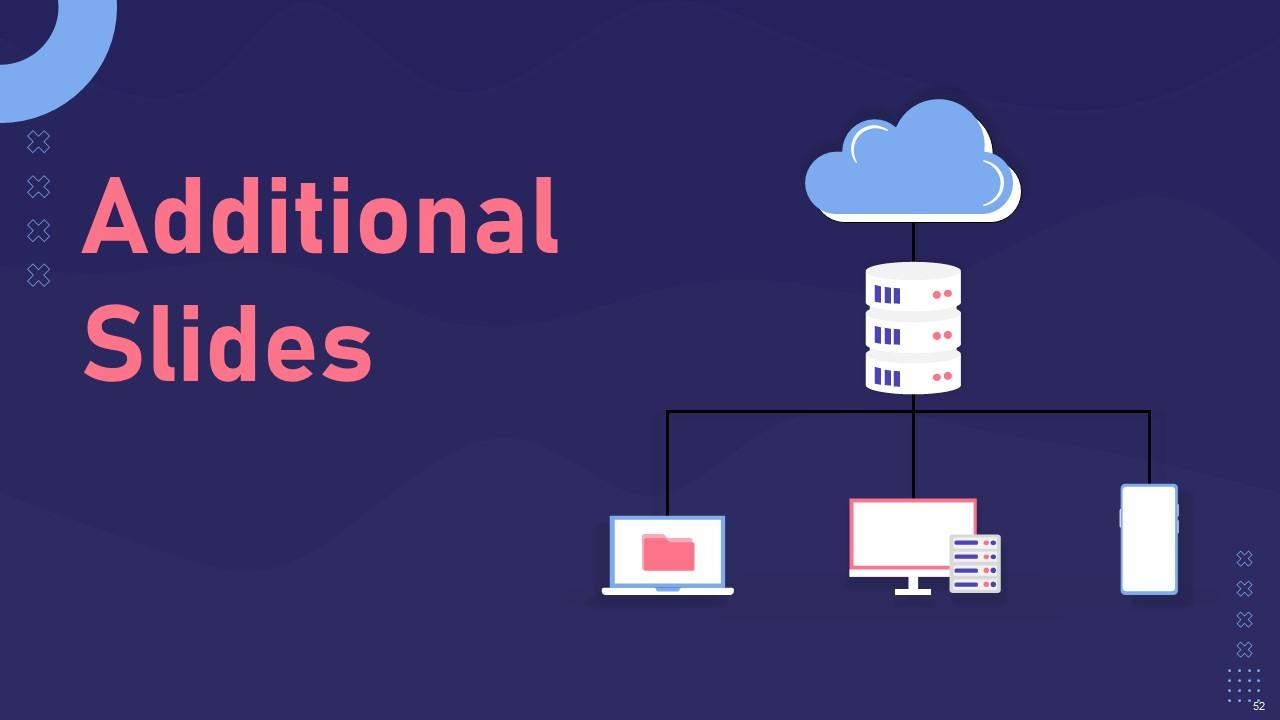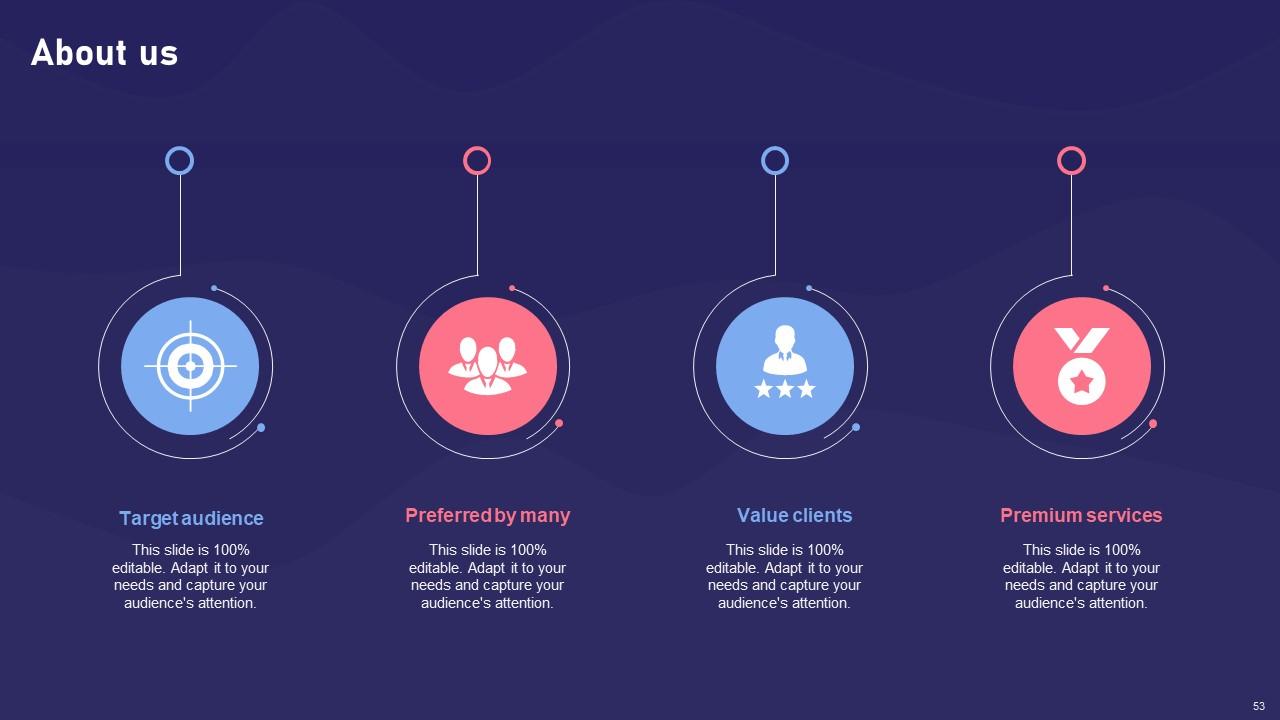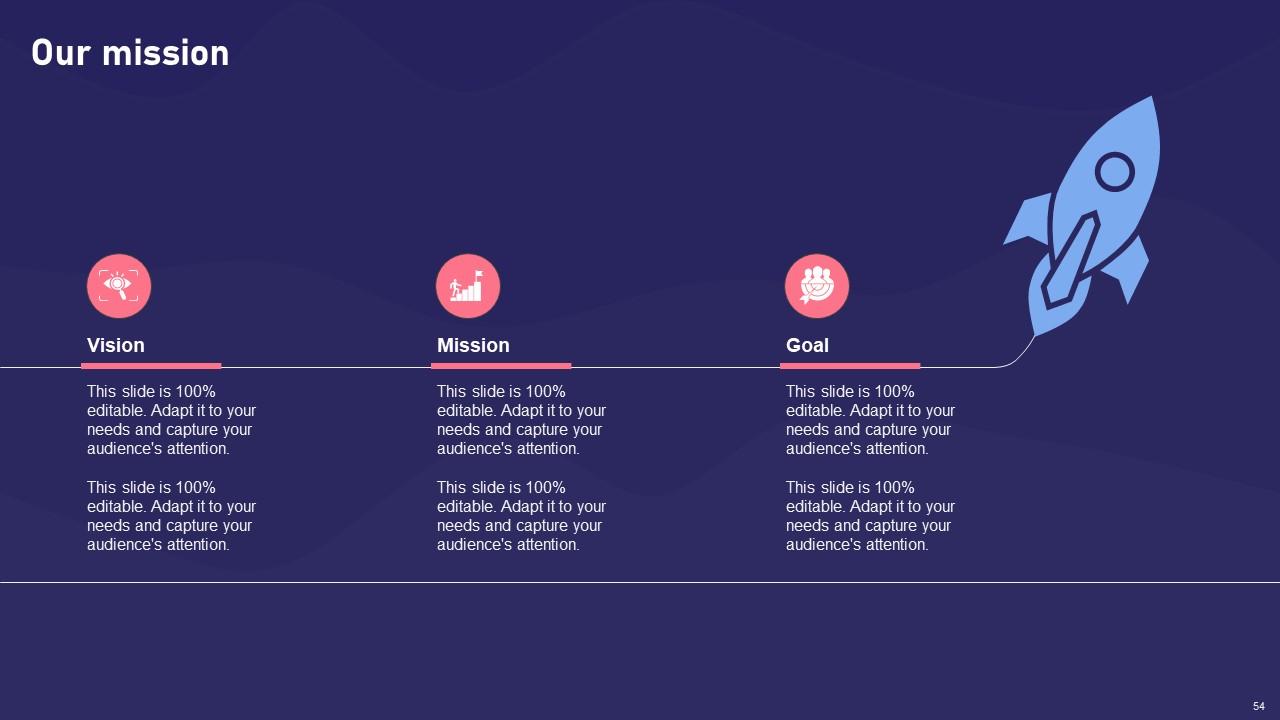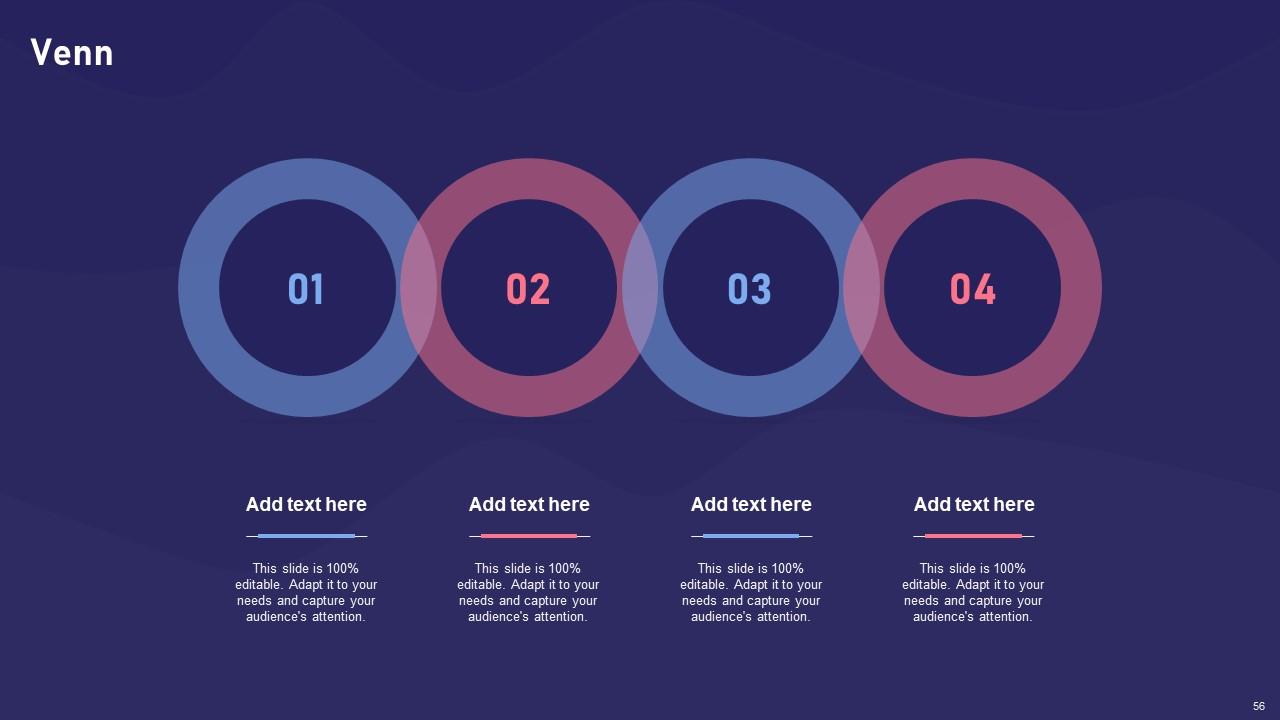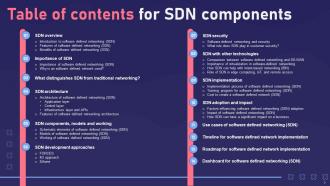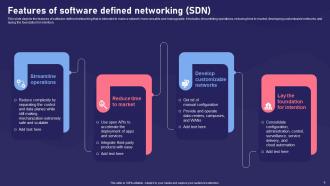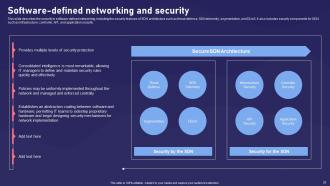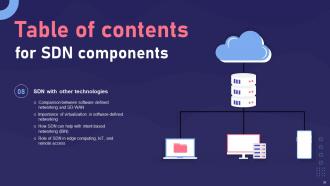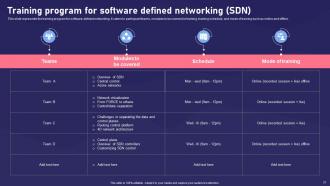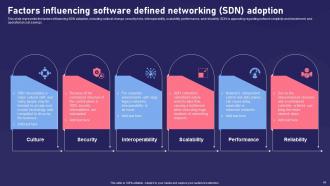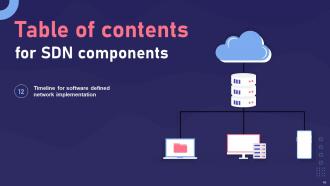SDN Components Powerpoint Presentation Slides
Our comprehensive Software-Defined Networking SDN PowerPoint presentation offers an overview covering its introduction, features, benefits, and importance while highlighting the differences from traditional networking. This Software Defined Networking Architecture deck delves into the architecture of SDN, exploring various layers, components, models, and their functioning. Moreover, SDN Components encompass different development approaches like FORCES, 4D approach, and Ethane, alongside the crucial role of SDN in customer security. Furthermore, the SDN Development Approaches presentation also compares SDN with SD-WAN, discusses virtualization in SDN, its relationship with intent-based networking IBN, and its applications in Edge Computing, IoT, and remote access scenarios. Additionally, the SDN Security template provides insights into SDN implementation, including training programs and step-by-step creation guidelines. Also, the SDN Adoption deck addresses factors influencing SDN adoption and its impact on businesses. Lastly, SDN Implementation includes a dedicated section on SDN security and use cases, along with a timeline and roadmap for SDN deployment. This 100 percent editable template is compatible with Google Slides, offering a comprehensive resource for anyone interested in understanding and leveraging SDN effectively. Get access now.
Our comprehensive Software-Defined Networking SDN PowerPoint presentation offers an overview covering its introduction, fea..
- Google Slides is a new FREE Presentation software from Google.
- All our content is 100% compatible with Google Slides.
- Just download our designs, and upload them to Google Slides and they will work automatically.
- Amaze your audience with SlideTeam and Google Slides.
-
Want Changes to This PPT Slide? Check out our Presentation Design Services
- WideScreen Aspect ratio is becoming a very popular format. When you download this product, the downloaded ZIP will contain this product in both standard and widescreen format.
-

- Some older products that we have may only be in standard format, but they can easily be converted to widescreen.
- To do this, please open the SlideTeam product in Powerpoint, and go to
- Design ( On the top bar) -> Page Setup -> and select "On-screen Show (16:9)” in the drop down for "Slides Sized for".
- The slide or theme will change to widescreen, and all graphics will adjust automatically. You can similarly convert our content to any other desired screen aspect ratio.
Compatible With Google Slides

Get This In WideScreen
You must be logged in to download this presentation.
PowerPoint presentation slides
This complete presentation has PPT slides on wide range of topics highlighting the core areas of your business needs. It has professionally designed templates with relevant visuals and subject driven content. This presentation deck has total of fifty nine slides. Get access to the customizable templates. Our designers have created editable templates for your convenience. You can edit the color, text and font size as per your need. You can add or delete the content if required. You are just a click to away to have this ready-made presentation. Click the download button now.
People who downloaded this PowerPoint presentation also viewed the following :
Content of this Powerpoint Presentation
Slide 1: This slide introduces SDN Components.
Slide 2: This slide depicts the Agenda of the presentation.
Slide 3: This slide incorporates the Table of contents.
Slide 4: This slide highlights the Title for the Topics to be discussed further.
Slide 5: This slide represents the introduction to software-defined networking that helps network managers to manage network resources faster.
Slide 6: This slide depicts the features of software-defined networking that is intended to make a network more versatile and manageable.
Slide 7: This slide talks about the benefits of software-defined networking, including control, efficiency, management, and visibility.
Slide 8: This slide shows the Heading for the Contents to be covered next.
Slide 9: This slide displays the importance of software-defined networking that allows network administrators to design, create, and run their networks innovatively.
Slide 10: This slide states why the software-defined network is used, including the increase in sales, excellent customer service, etc.
Slide 11: This slide reveals the Title for the Ideas to be covered further.
Slide 12: This slide represents the comparison between software-defined networking and traditional networking based on their working methods.
Slide 13: This slide showcases the Heading for the Ideas to be discussed in the following template.
Slide 14: This slide elucidates the software-defined networking architecture that is made up of three layers such as application, control, and infrastructure layer.
Slide 15: This slide talks about the application layer of the SDN architecture that includes the network applications and functions that businesses deploy.
Slide 16: This slide outlines the control layer of SDN architecture, which is the second layer in the model.
Slide 17: This slide represents the infrastructure layer and Application programming interfaces of SDN architecture.
Slide 18: This slide depicts software-defined networking architecture features that include straight configurable, agile, vendor-neutral, etc.
Slide 19: This slide mentions the Title for the Components to be covered in the next template.
Slide 20: This slide presents the schematic elements of software-defined networking, such as the northbound interface, SDN controller, and southbound interface.
Slide 21: This slide shows the software-defined networking models, covering open SDN, SDN by APIs, SDN overlay model and hybrid SDN.
Slide 22: This slide describes the working of software-defined networking, including its various components.
Slide 23: This slide portrays the Heading for the Topics to be covered further.
Slide 24: This slide displays the forwarding and control element separation methodology of SDN development and caters to the overview and deployment methods.
Slide 25: This slide reveals the 4D methodology of SDN development and includes the architecture and principles of the 4D approach.
Slide 26: This slide discusses the ethane methodology of SDN development by covering its overview and principles.
Slide 27: This slide highlights the Title for the Ideas to be discussed next.
Slide 28: This slide describes the security in software-defined networking, including the security features of SDN architecture such as threat defense, SDN telemetry, segmentation, and DDoS.
Slide 29: This slide portrays the role of software-defined networking in customer security.
Slide 30: This slide highlights the Heading for the Ideas to be covered further.
Slide 31: This slide depicts the comparison between software-defined networking and an SD-WAN.
Slide 32: This slide represents the importance of virtualization in software-defined networking and how they complement one another.
Slide 33: This slide describes how SDN can help with intent-based networking, which comprises many components.
Slide 34: This slide mentions the role of software-defined networking in edge computing, IoT, and remote locations to make them more accessible and less expensive.
Slide 35: This slide reveals the Title for the Topics to be covered next.
Slide 36: This slide outlines the implementation process of software-defined networking that includes creating a use case, forming a multi-functional team, etc.
Slide 37: This slide illustrates the training program for software-defined networking.
Slide 38: This slide depicts the cost of creating a software-defined network, including network components such as hardware, software, and training.
Slide 39: This sldie indicates the Heading for the Contents to be discussed in the following template.
Slide 40: This slide exhibits the Factors influencing software defined networking (SDN) adoption.
Slide 41: This slide elucidates the impact of software-defined networking that has majorly impacted IT infrastructure management and network architecture.
Slide 42: This slide displays the four critical areas where SDN can make a difference in an organization, such as network programmability, centralized intelligence and control, etc.
Slide 43: This slide incorporates the Title for the Components to be discussed further.
Slide 44: This slide showcases the use cases of software-defined networking.
Slide 45: This slide contains the Heading for the Topics to be covered in the forth-coming template.
Slide 46: This slide talks about the timeline for software-defined network implementation, including the steps to be performed.
Slide 47: This slide exhibits the Title for the Topics to be covered in the forth-coming template.
Slide 48: This slide outlines the roadmap for software-defined network implementation, including the steps to be performed.
Slide 49: This slide displays the Heading for the Contents to be discussed next.
Slide 50: This slide illustrates the dashboard for the software-defined network by covering details of bandwidth administrator, traffic quality, active flows, etc.
Slide 51: This is the Icons slide containing all the Icons used in the plan.
Slide 52: This slide is used for showcasing some Additional information.
Slide 53: This is the About us slide. State your company-related information here.
Slide 54: This is Our mission slide. State your organization's mission, vision, and goals here.
Slide 55: This is Our team slide for depicting the information related to team members.
Slide 56: This is the Venn Diagram slide.
Slide 57: This is the 30-60-90 days plan slide for efficient planning.
Slide 58: This is the Puzzle sldie with related imagery.
Slide 59: This is the Thank You slide for acknowledgement
SDN Components Powerpoint Presentation Slides with all 64 slides:
Use our SDN Components Powerpoint Presentation Slides to effectively help you save your valuable time. They are readymade to fit into any presentation structure.
FAQs
Software-defined networking is a network architecture that allows network managers to manage network resources faster and more efficiently through centralized control.
The key features of SDN include increased network versatility, centralized control, agility, and vendor neutrality. The benefits of SDN include improved network efficiency, enhanced security, easier management, and better visibility into network operations.
Software-defined networking differs from traditional networking in its working methods. While traditional networking relies on the manual configuration of individual network devices, SDN centralizes control through software, enabling more dynamic and flexible management of network resources.
The software-defined networking architecture consists of three layers: the application layer, which includes network applications and functions; the control layer, responsible for managing network resources; and the infrastructure layer, which comprises physical network devices.
Some common use cases for software-defined networking include security enhancements through threat defense and segmentation, improved customer security, implementation of intent-based networking, and application in edge computing, IoT, and remote locations for accessibility and cost savings.
-
I am not the best at presentations but using SlideTeam’s PPT template made it easier for me. Thank you SlideTeam!
-
The templates you provide are great! They have saved me tons of time and made my presentations come alive. Thank you for this awesome product. Keep up the good work!


